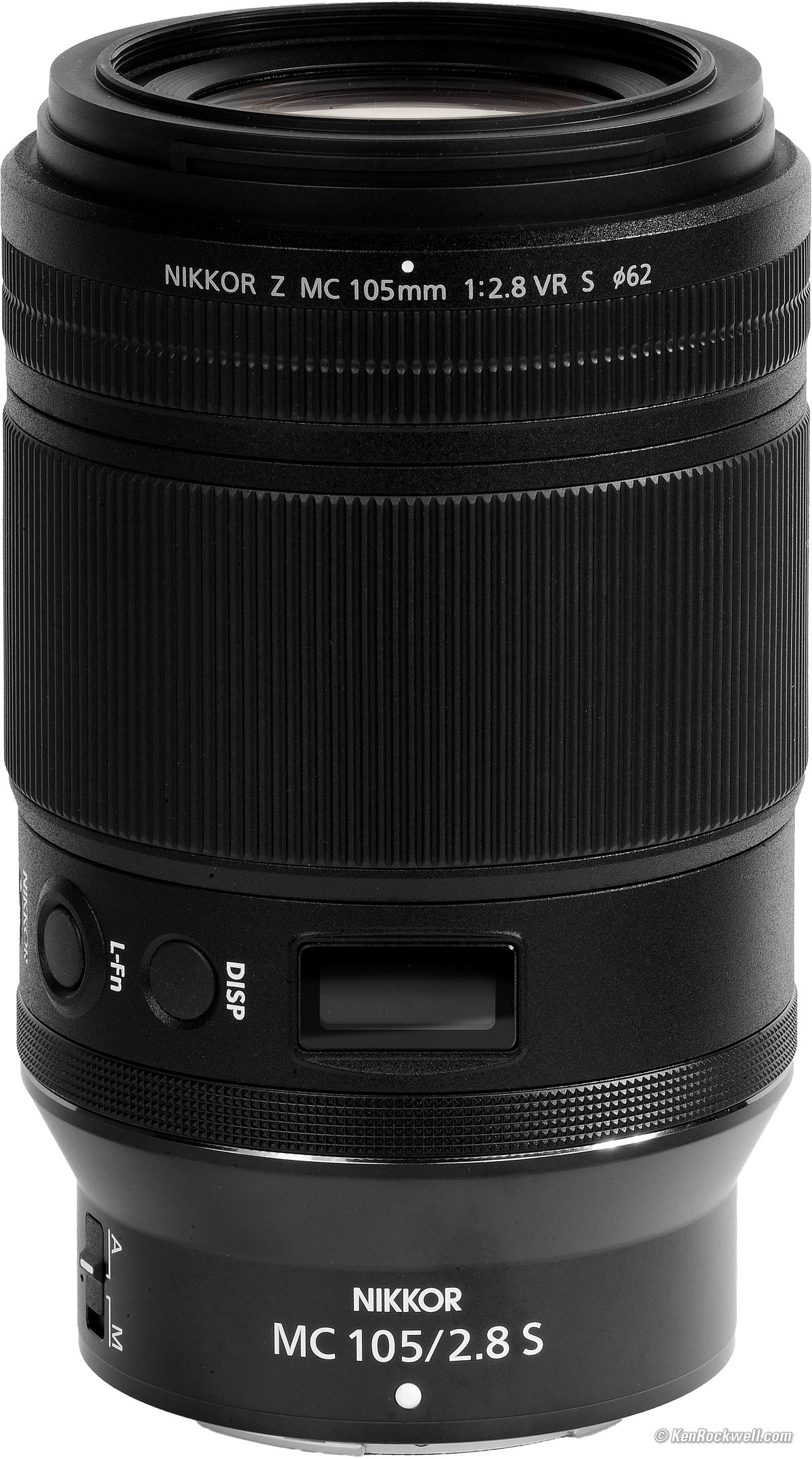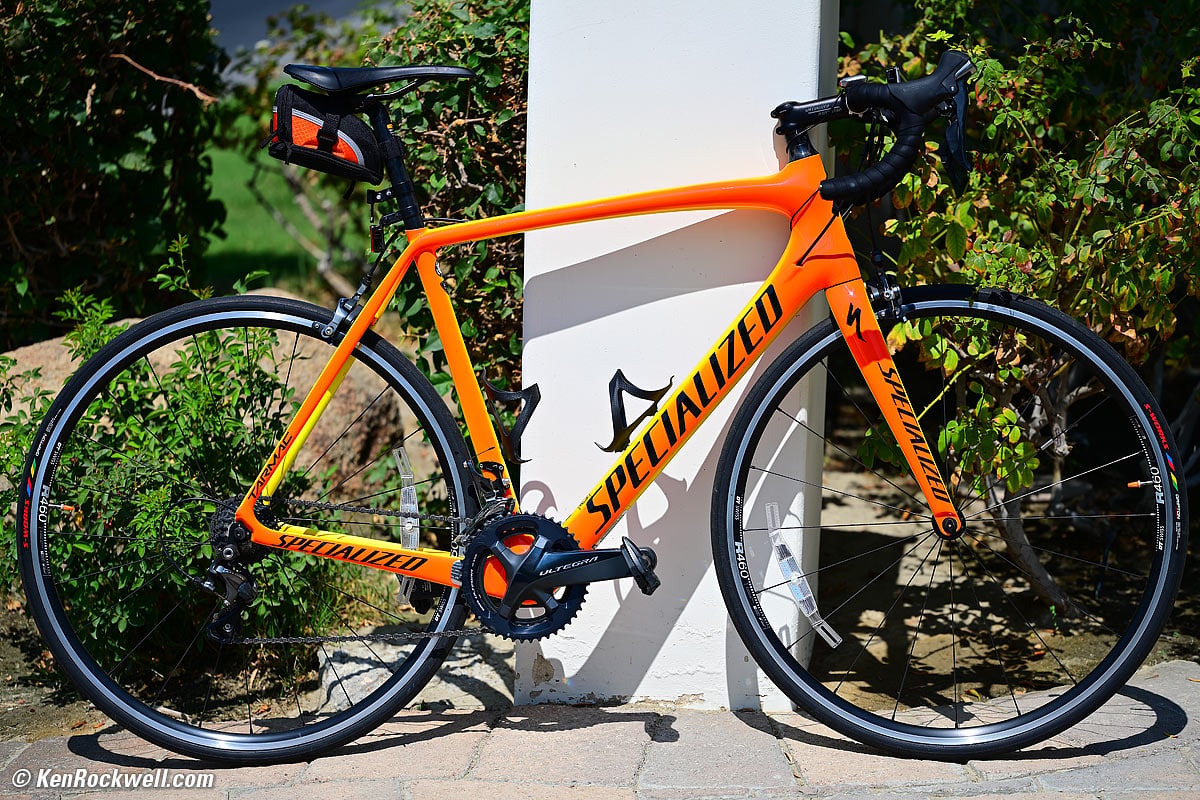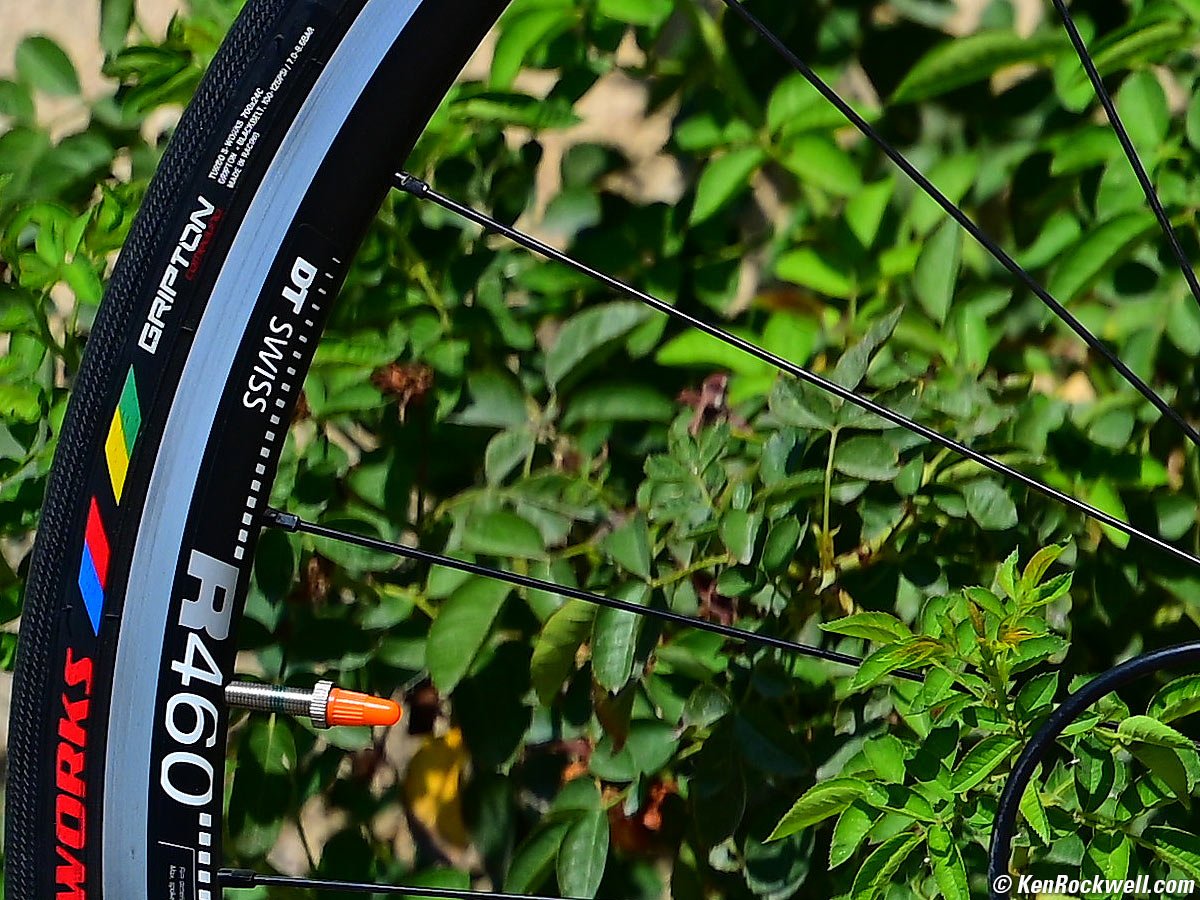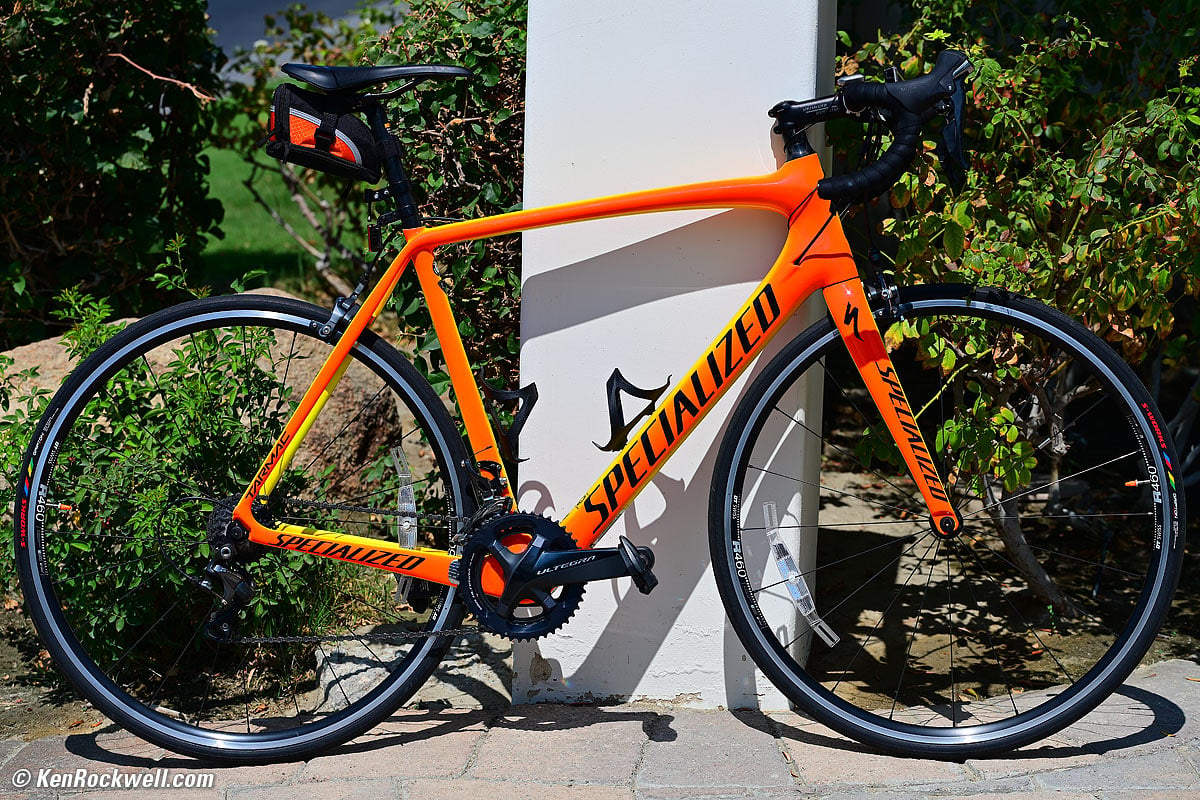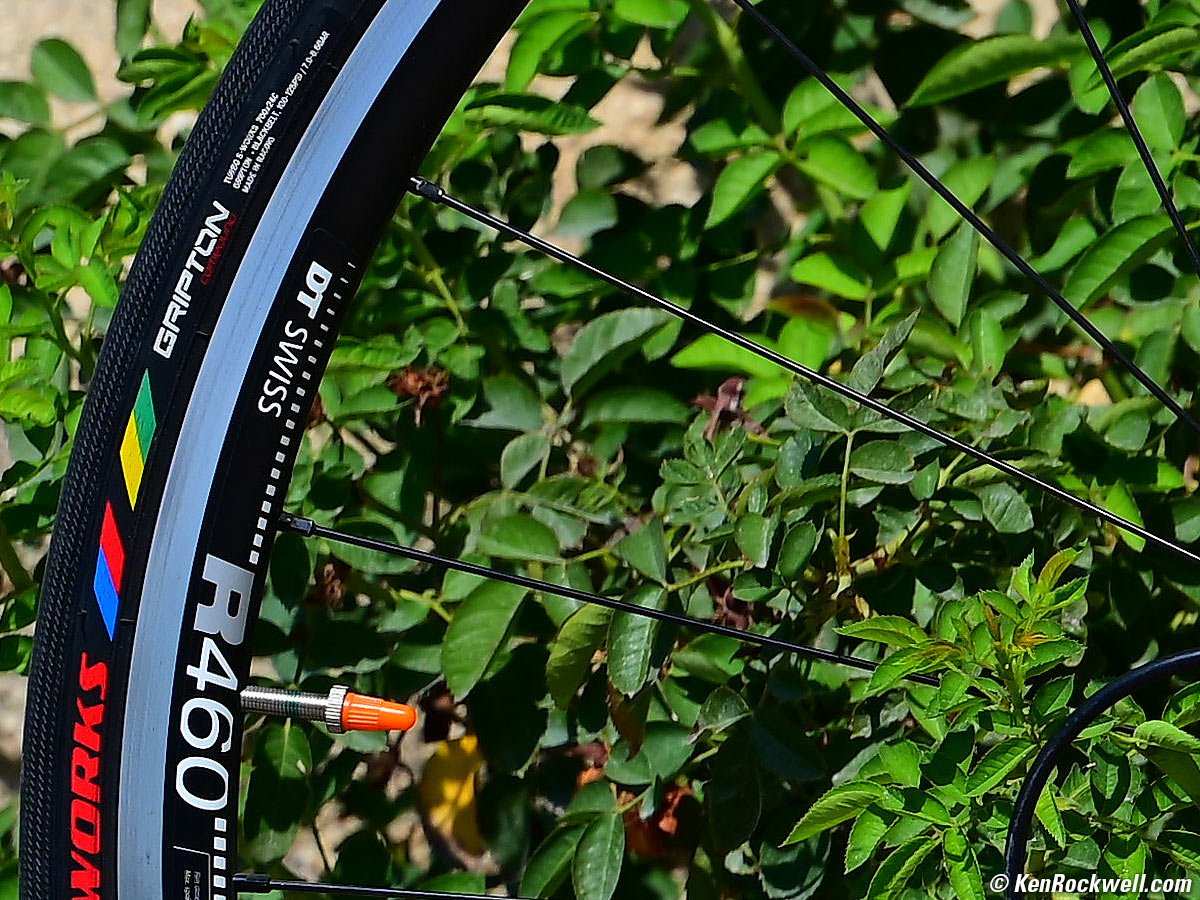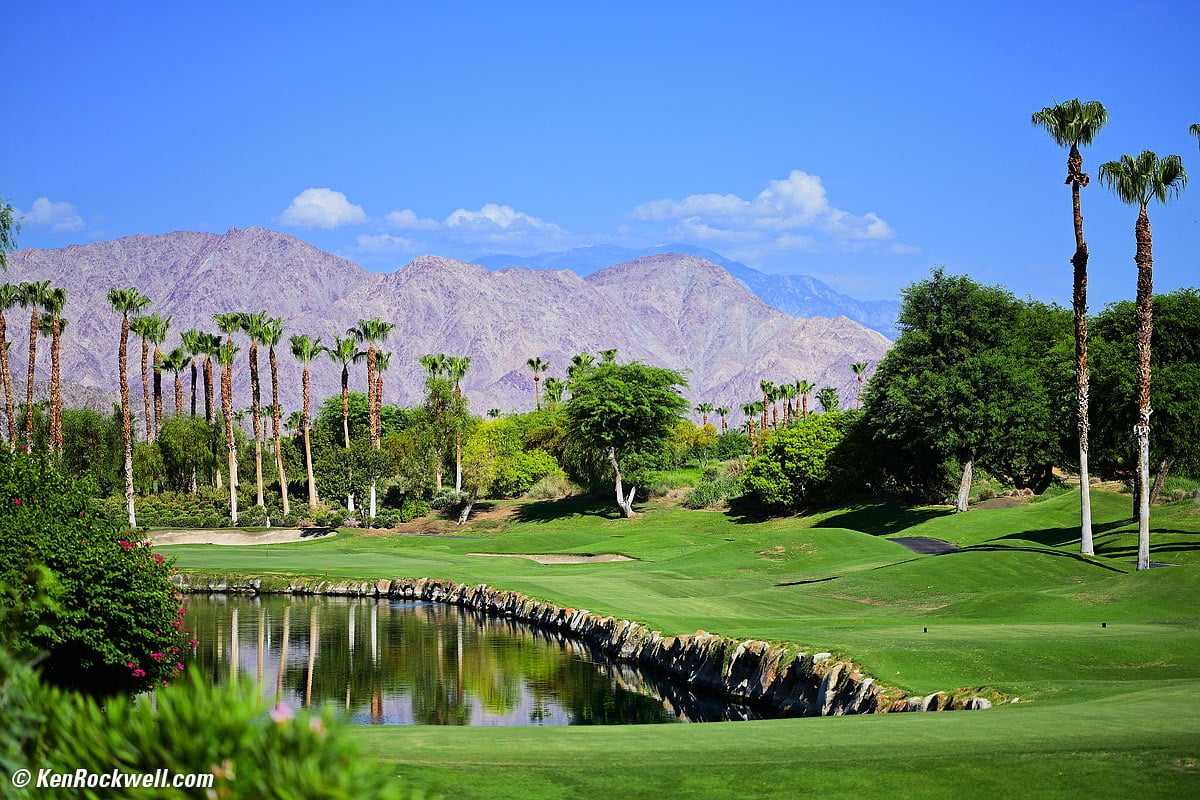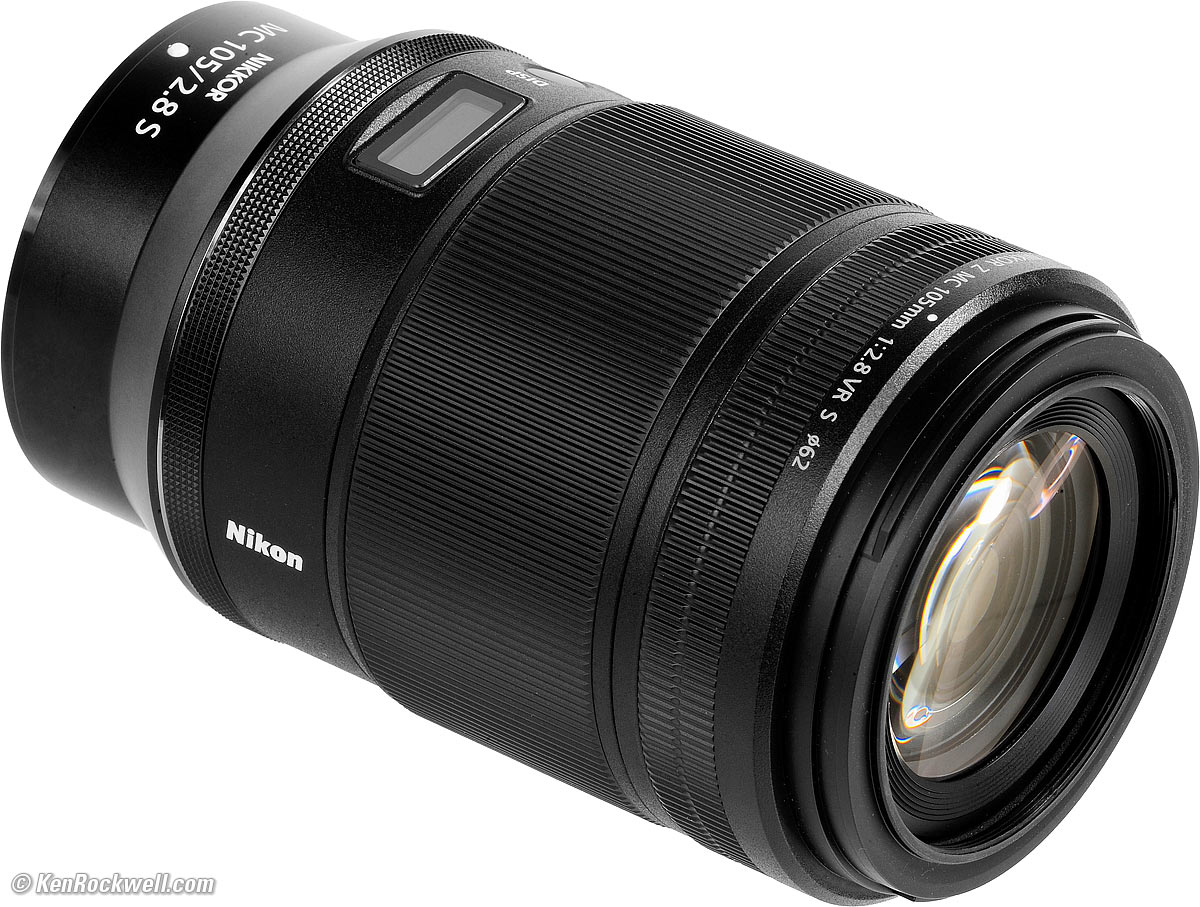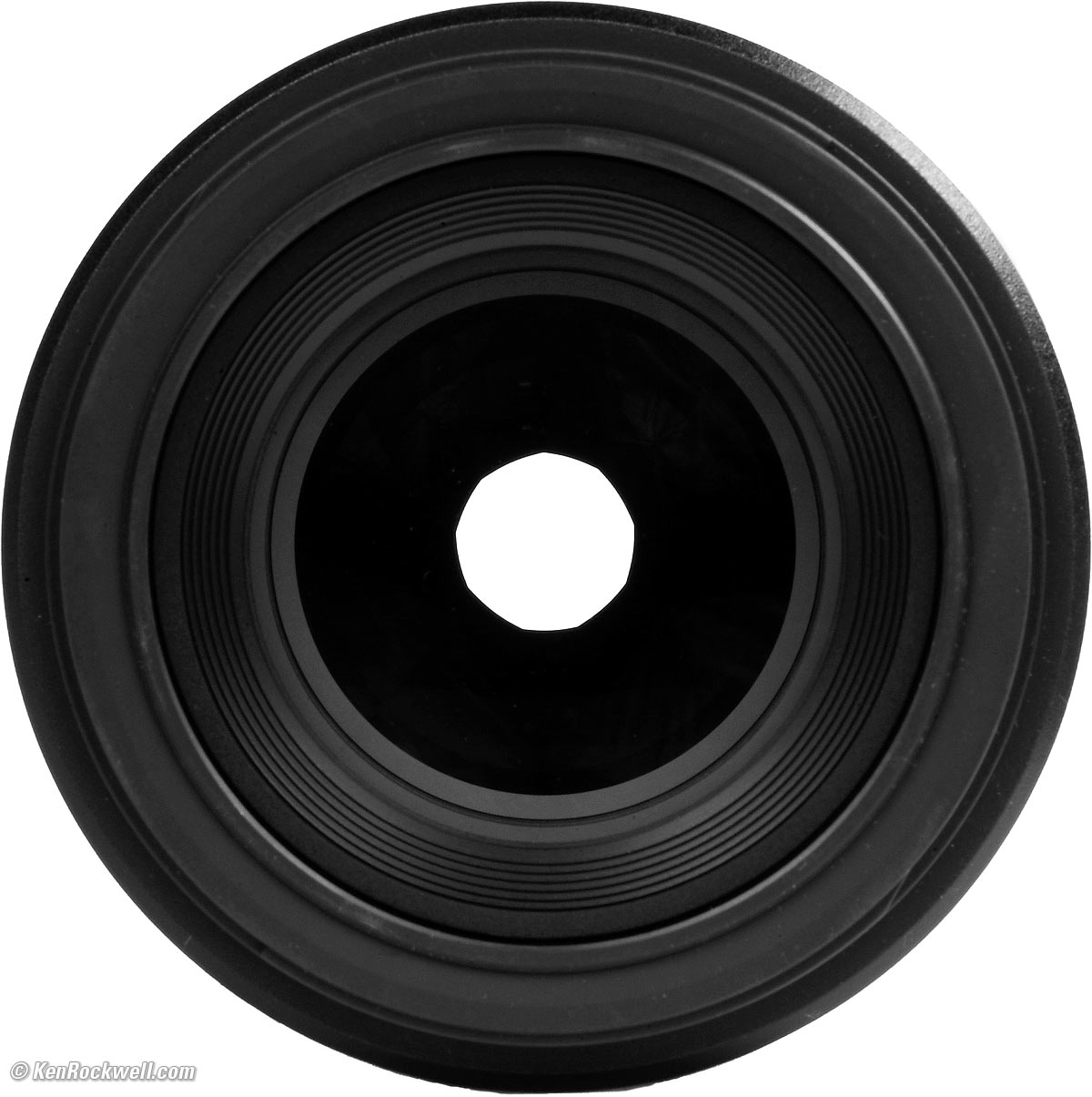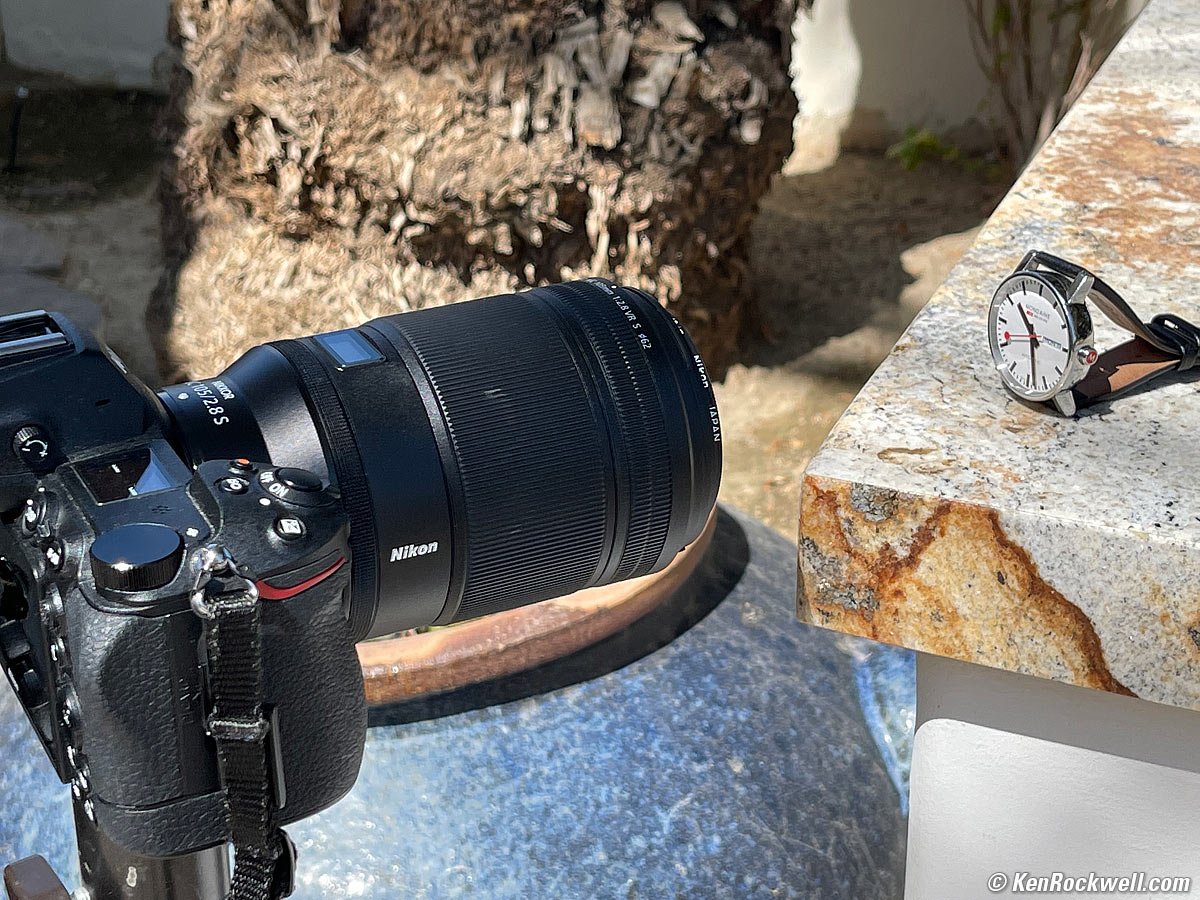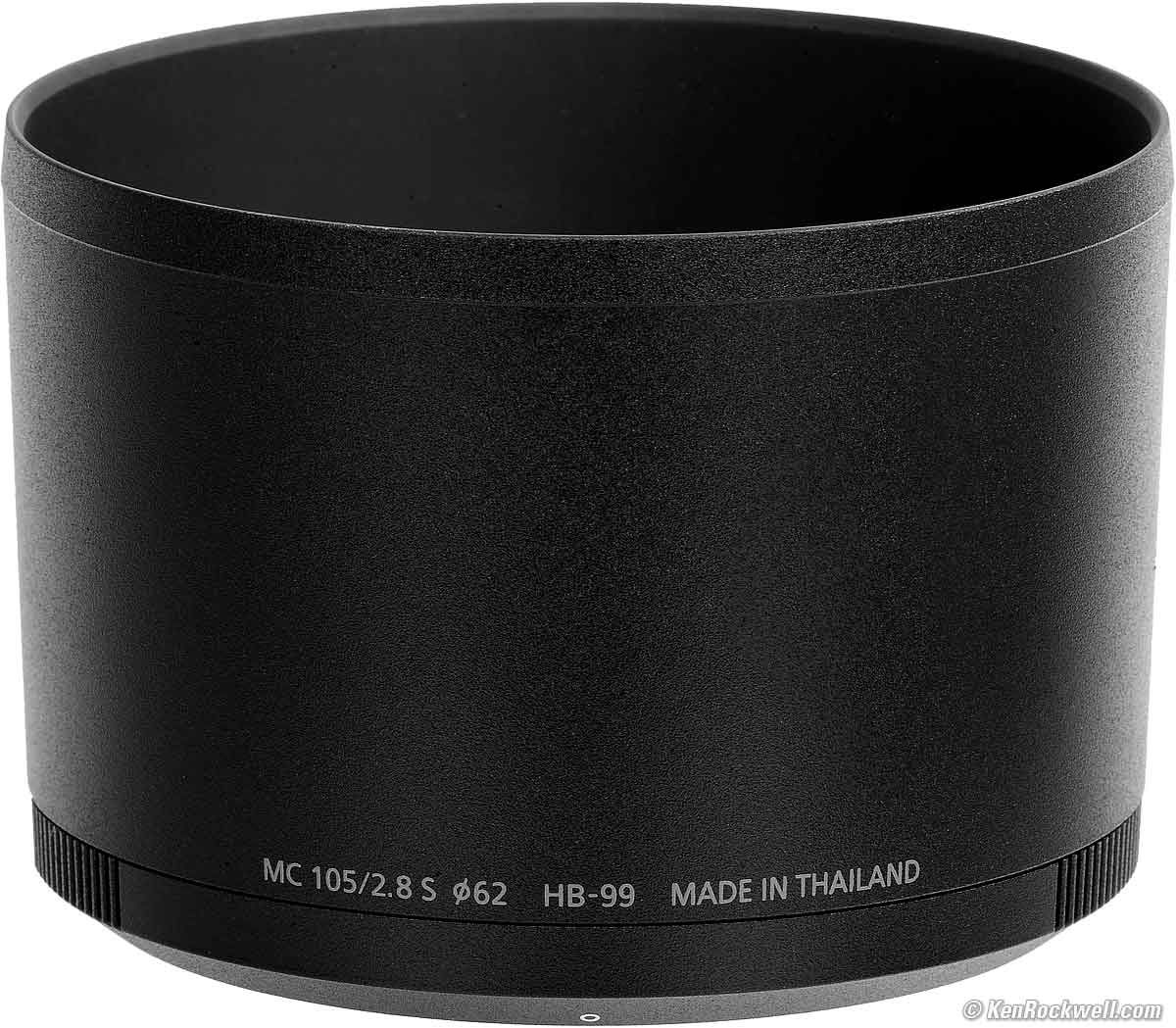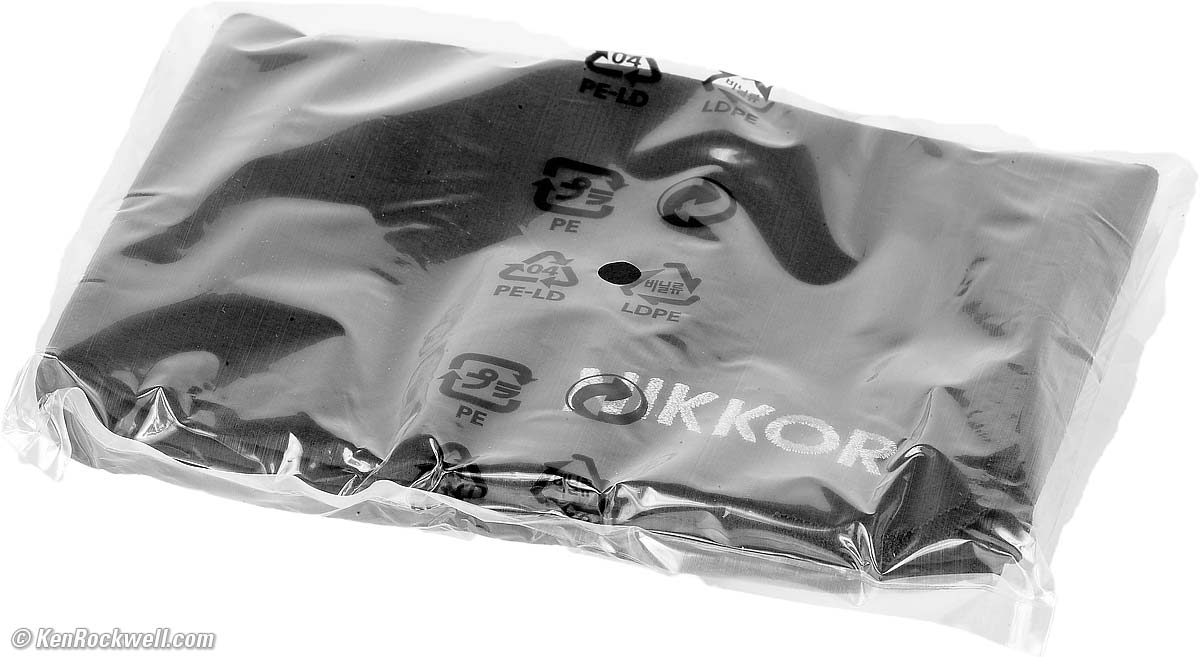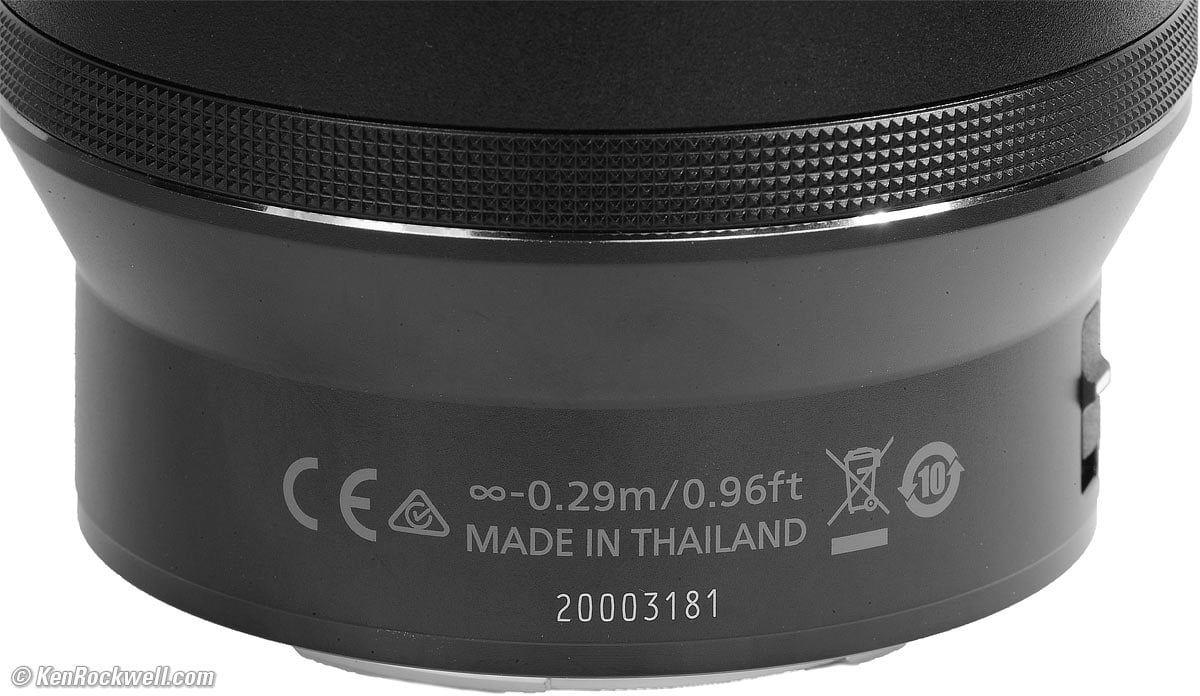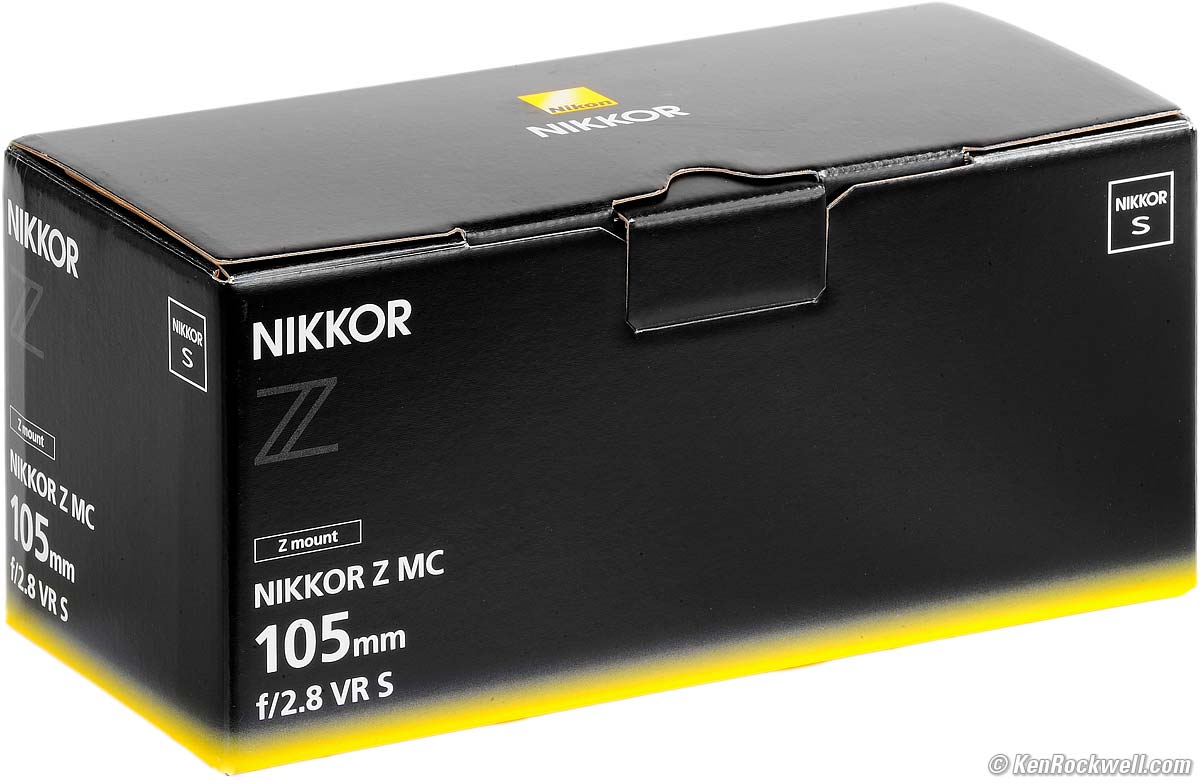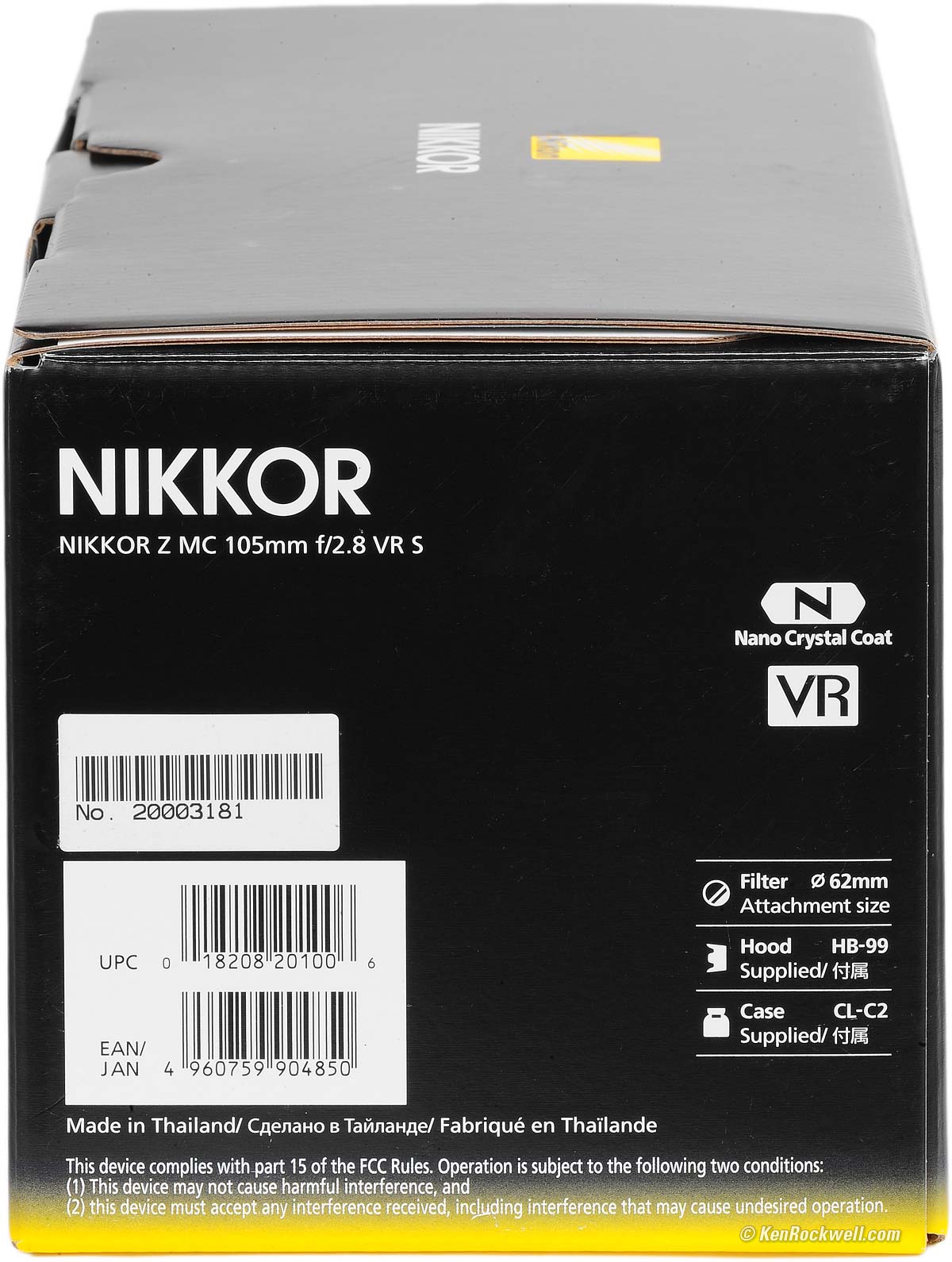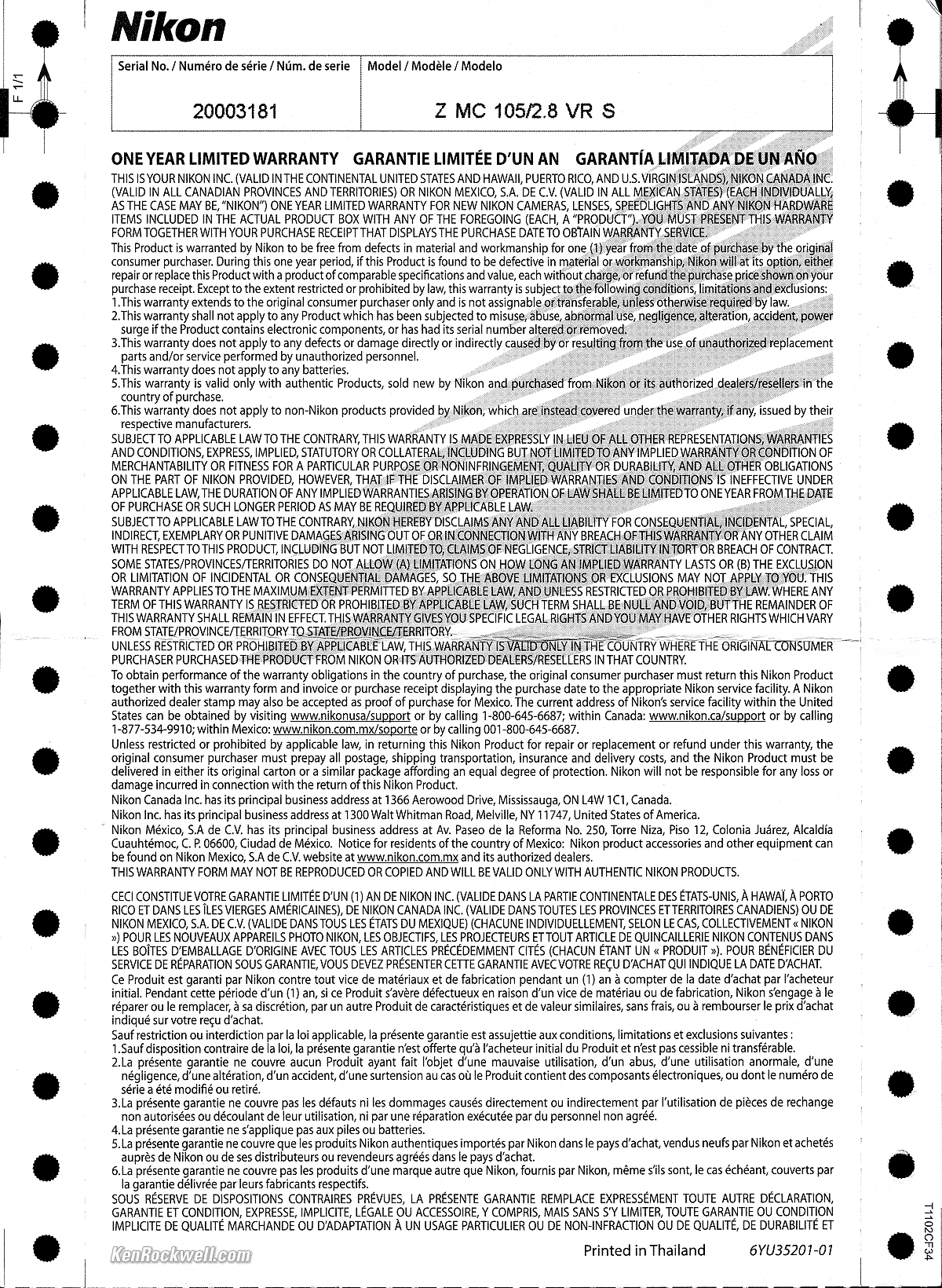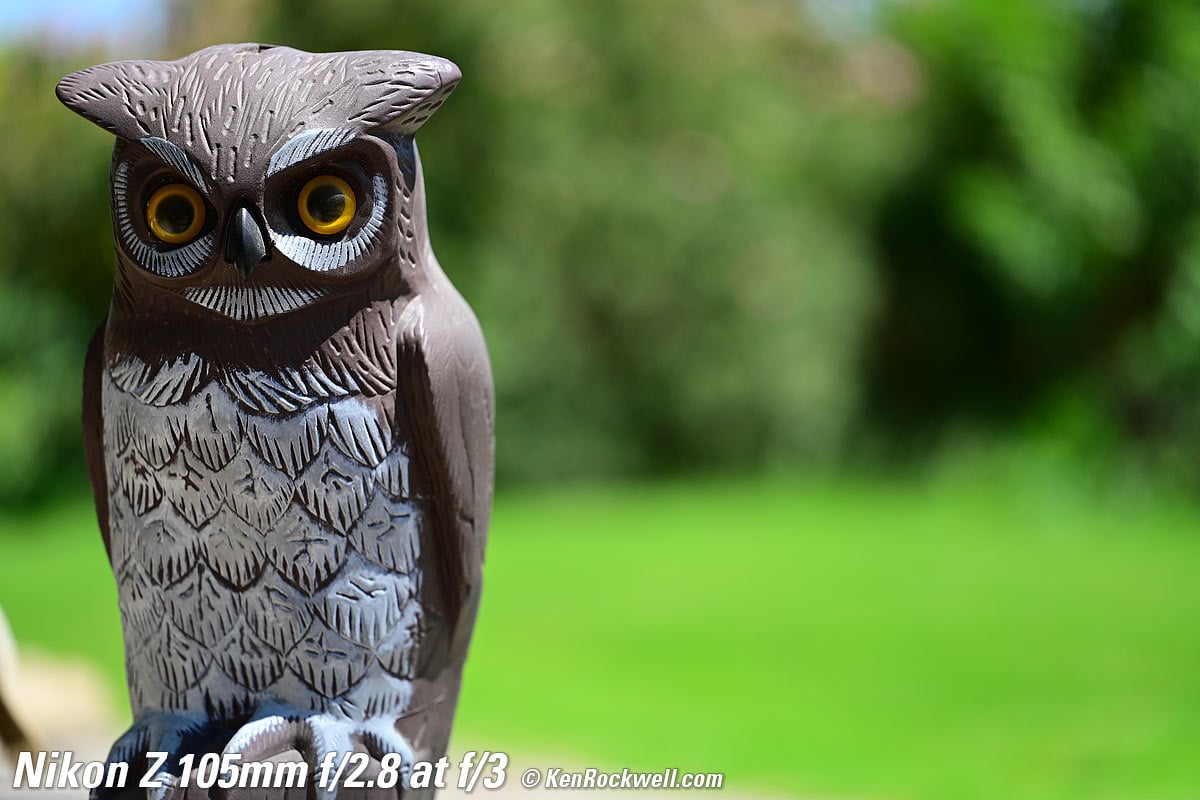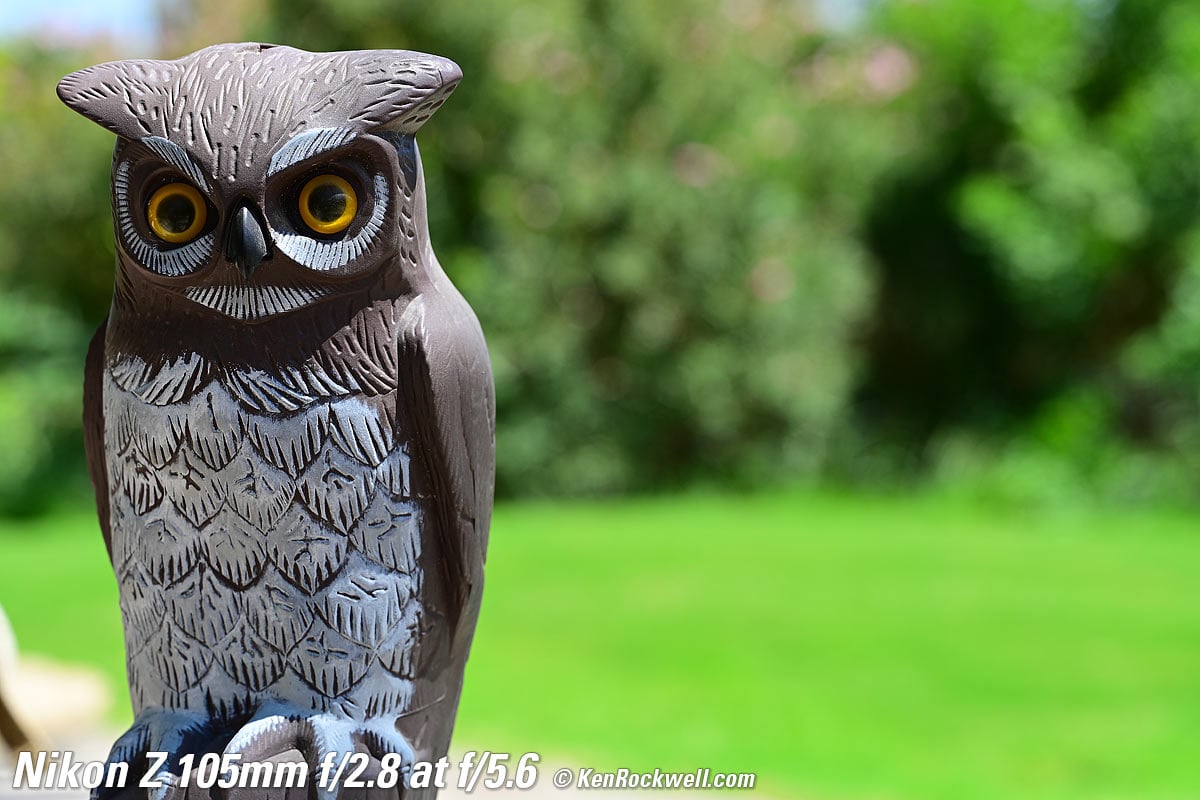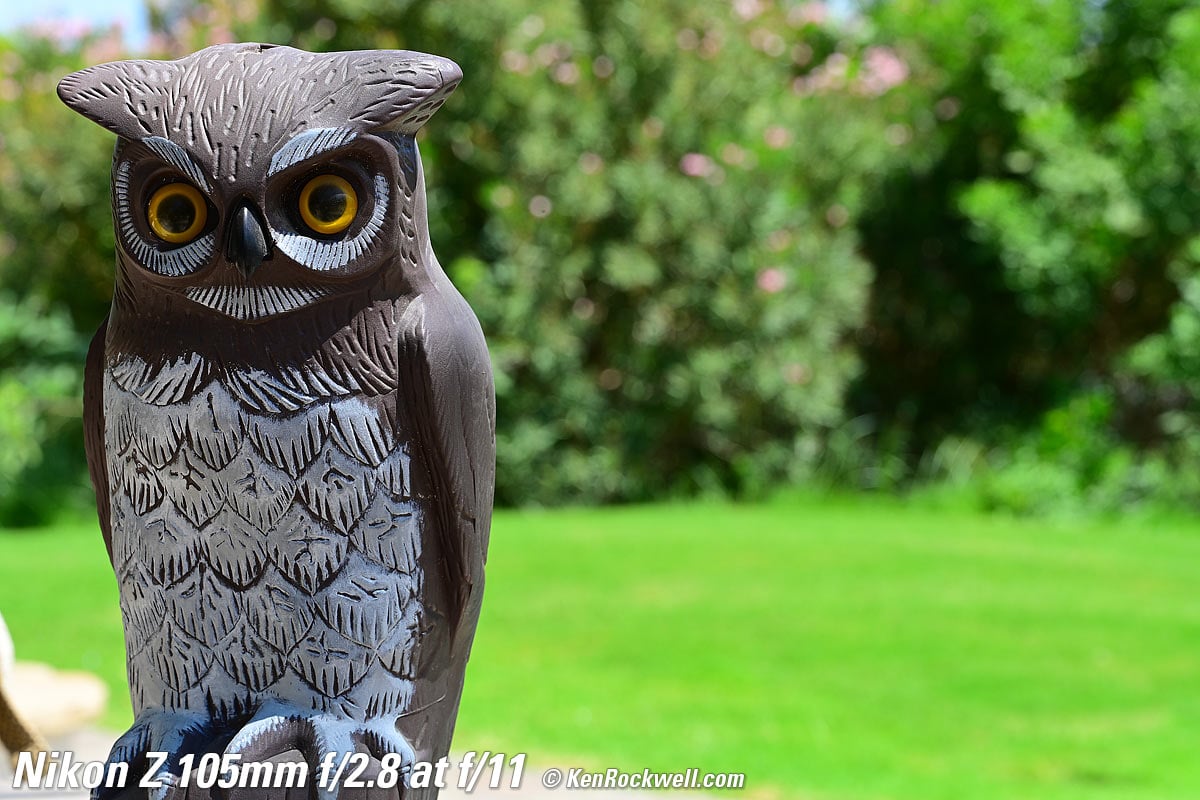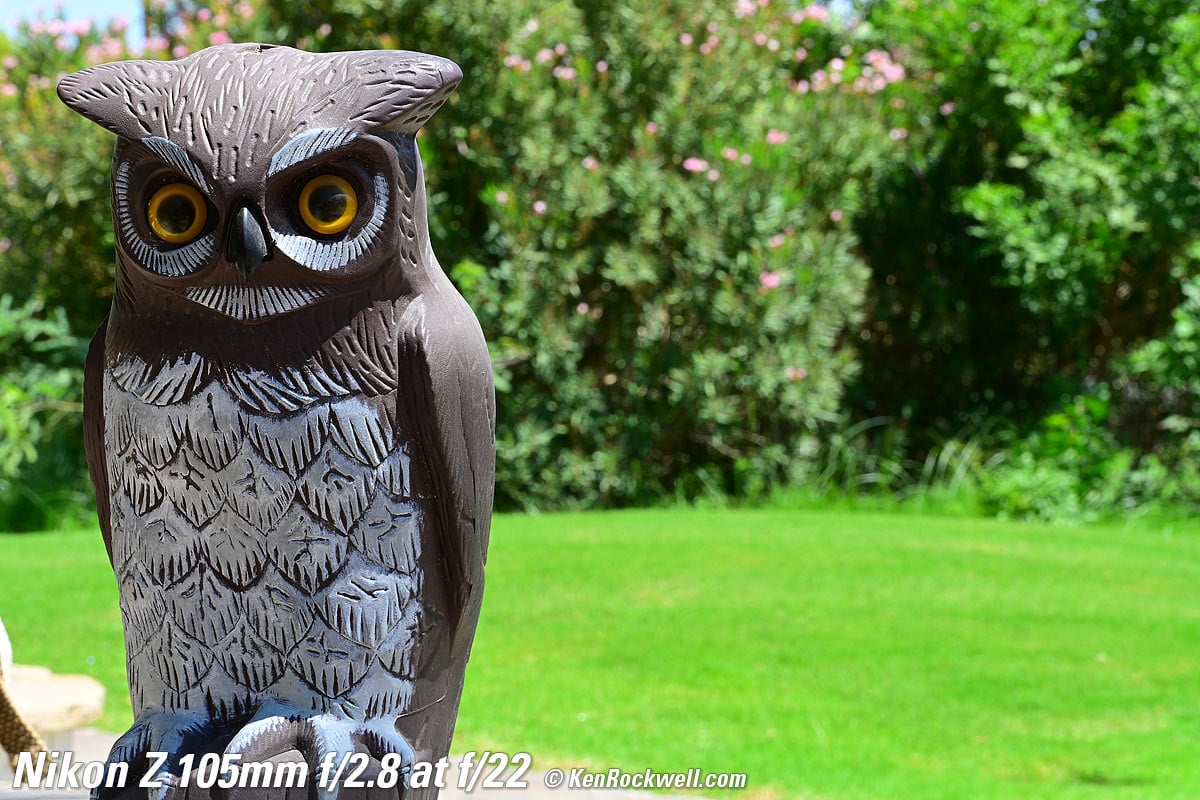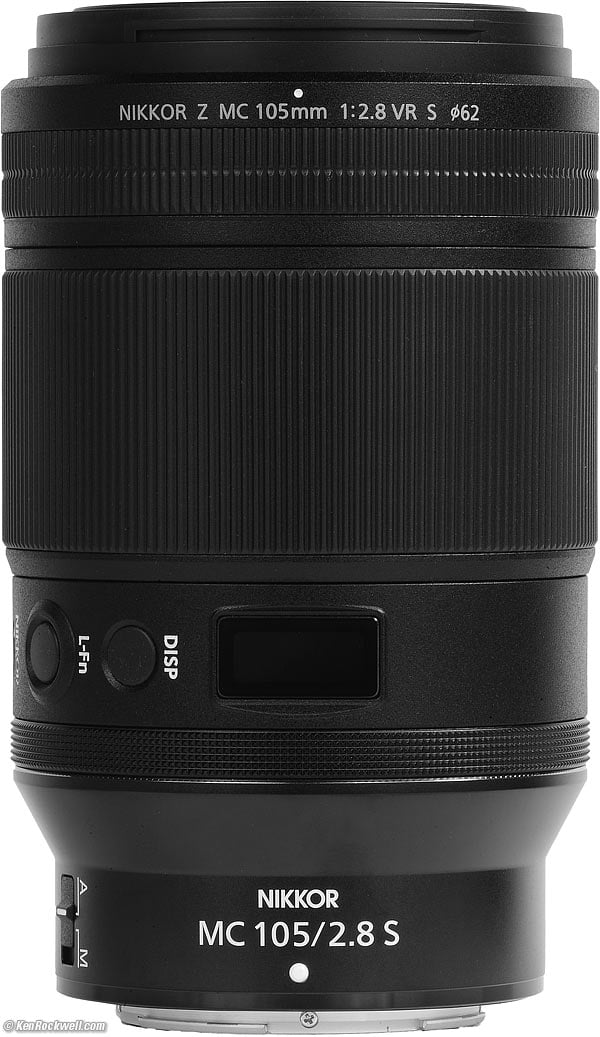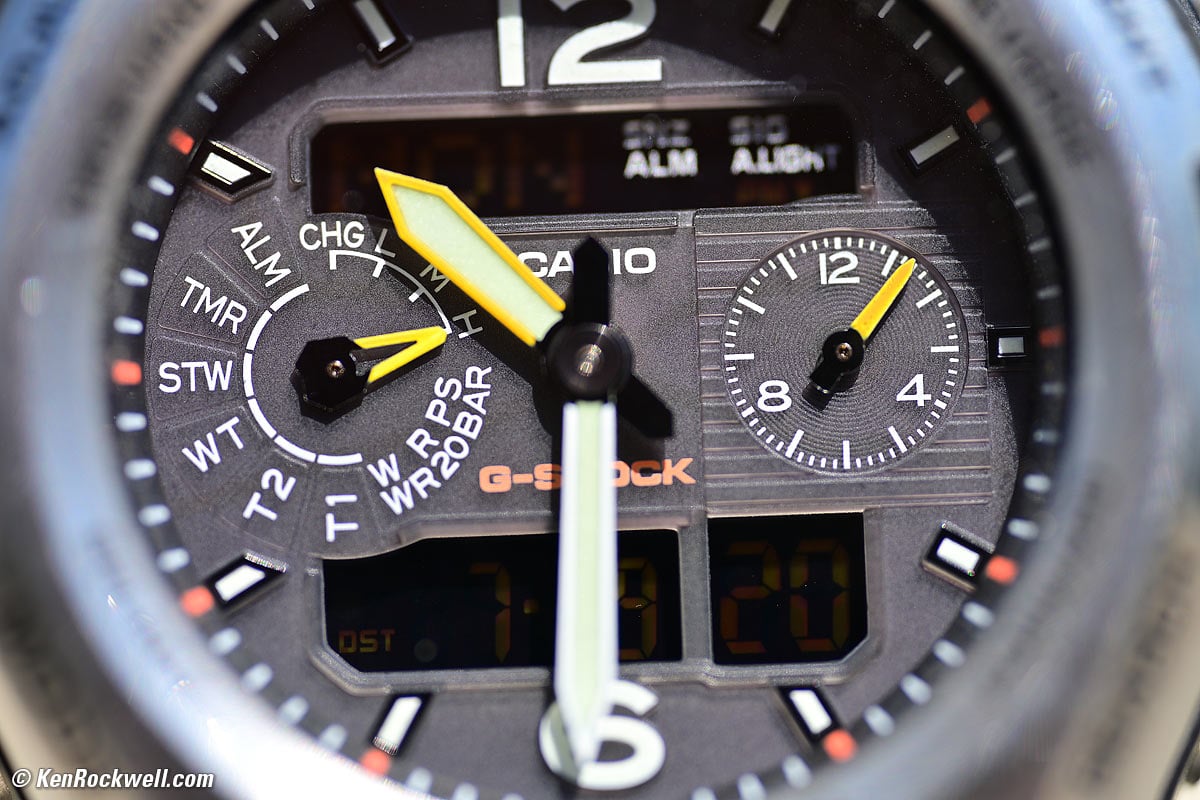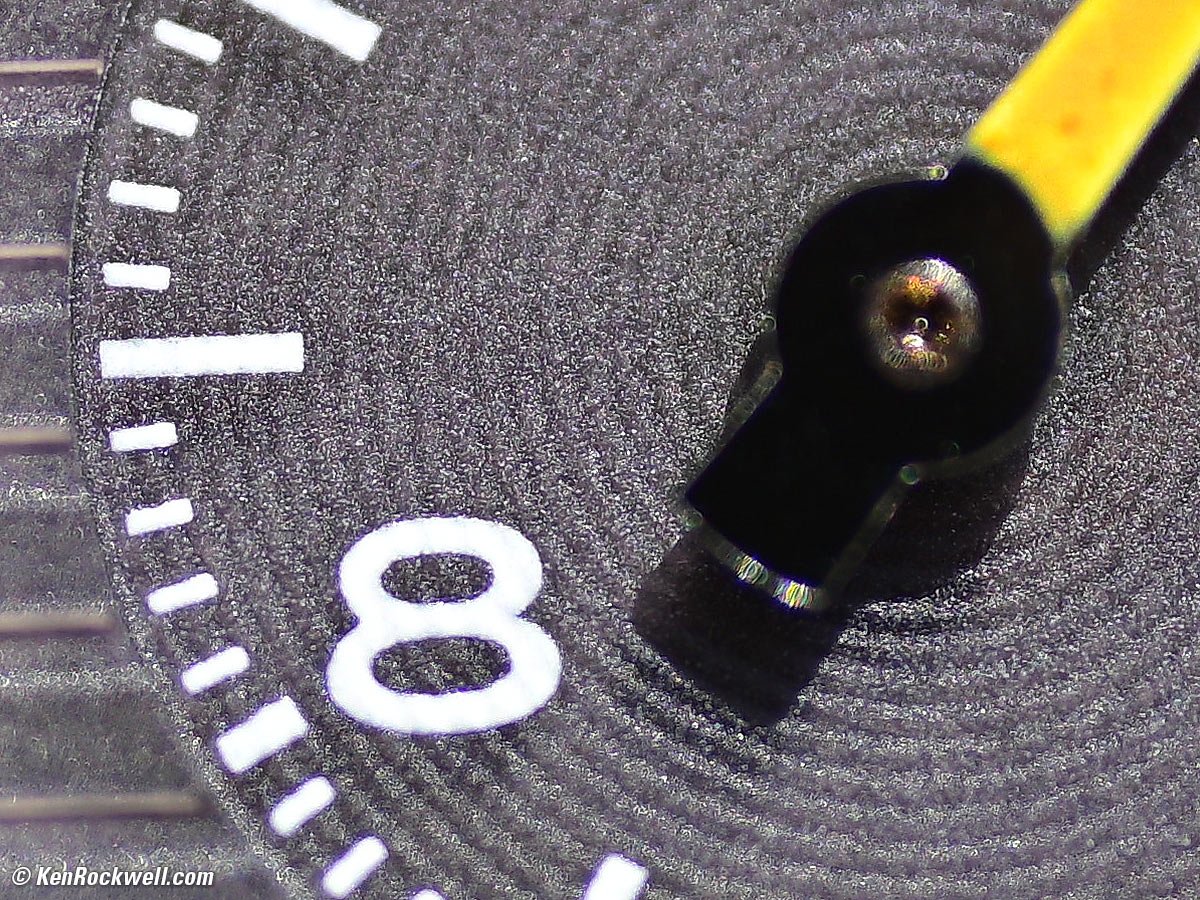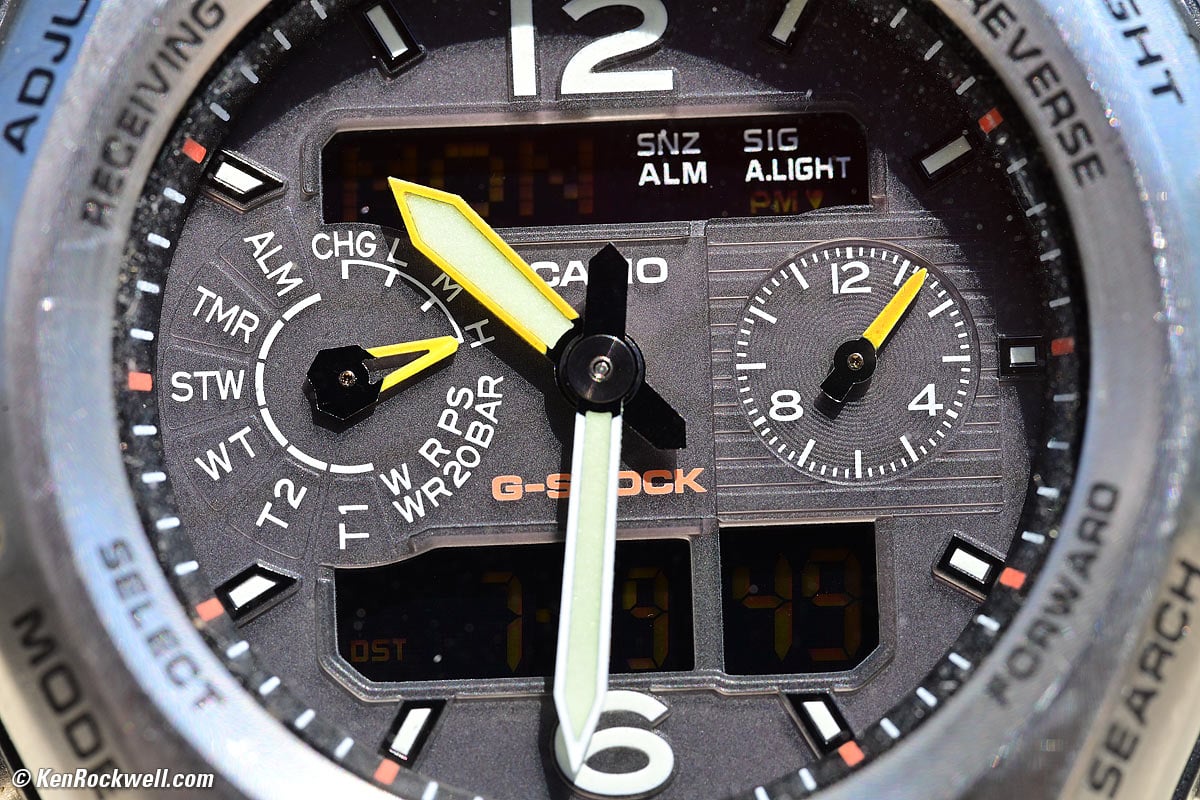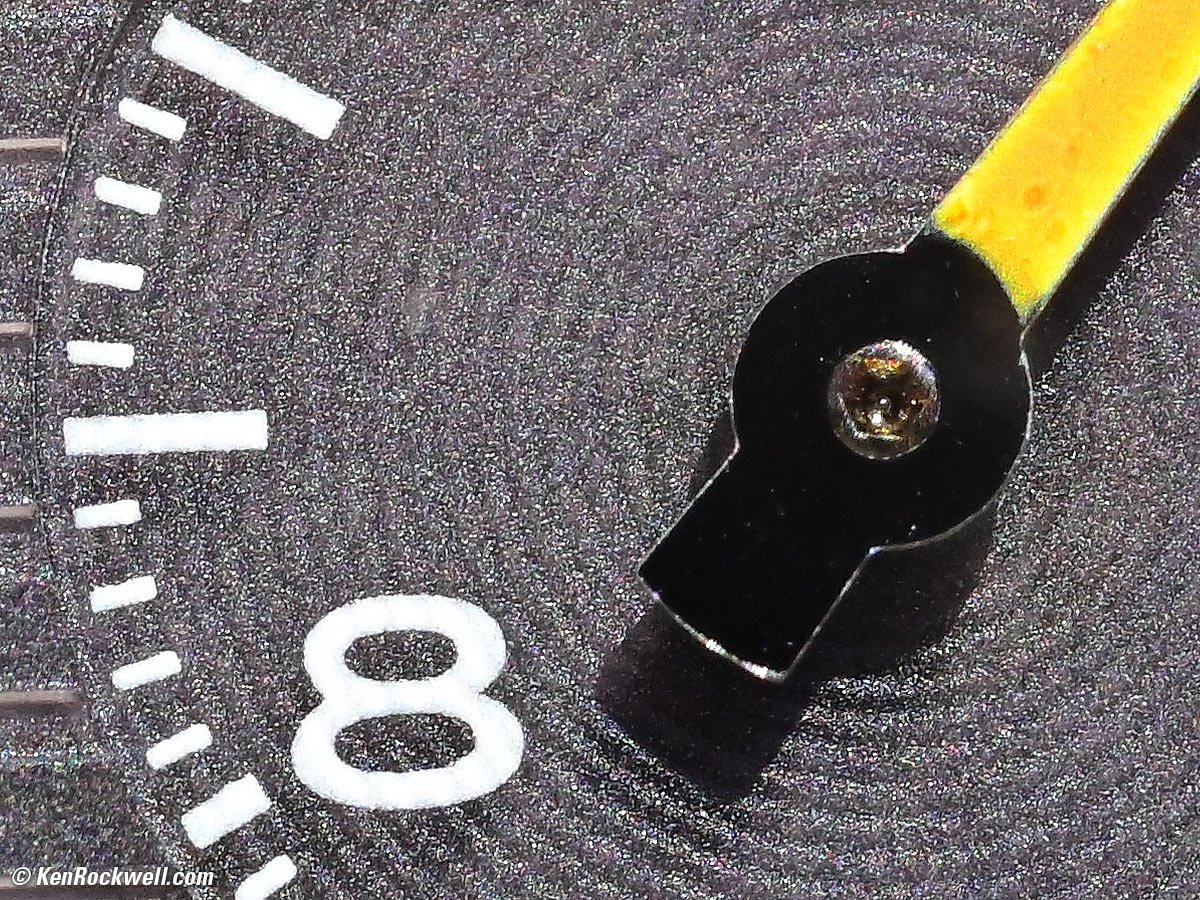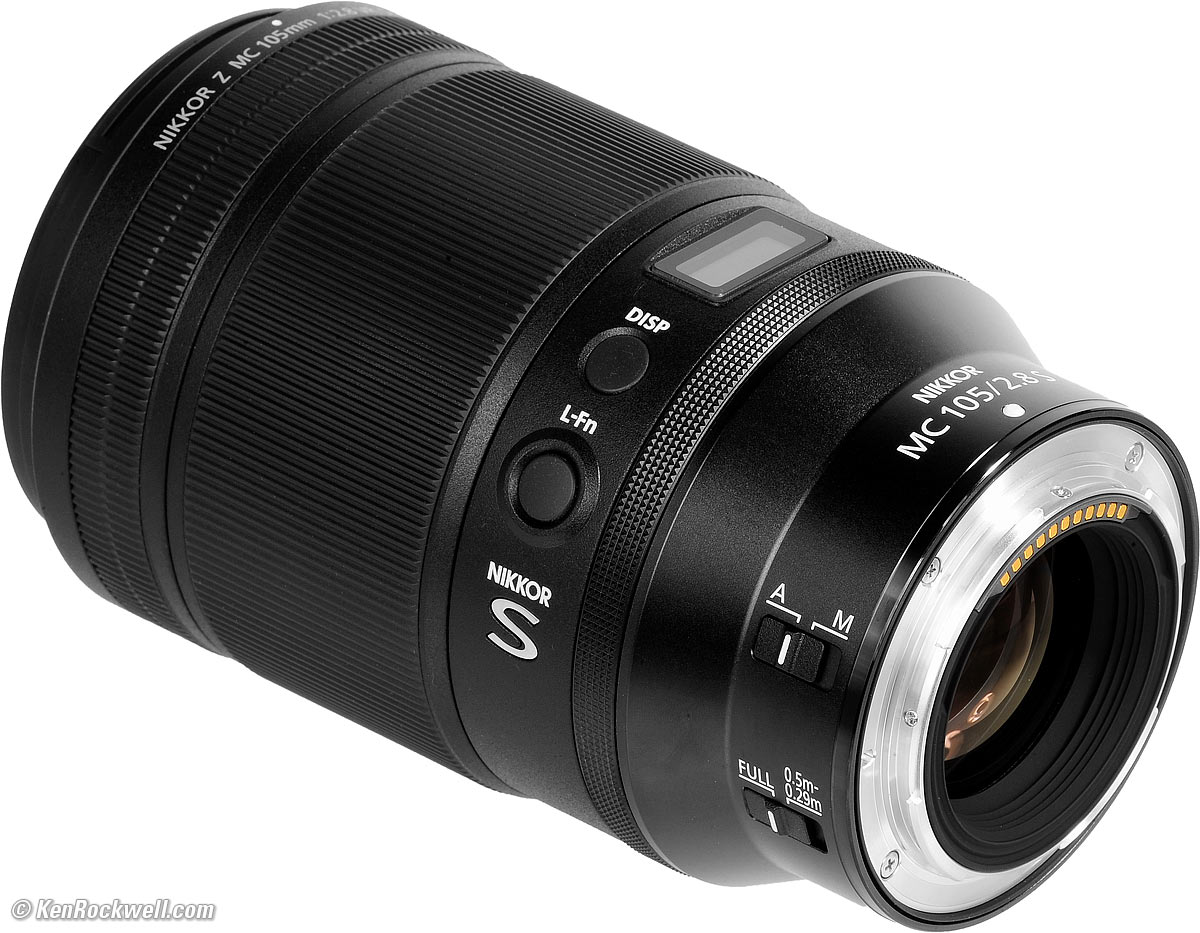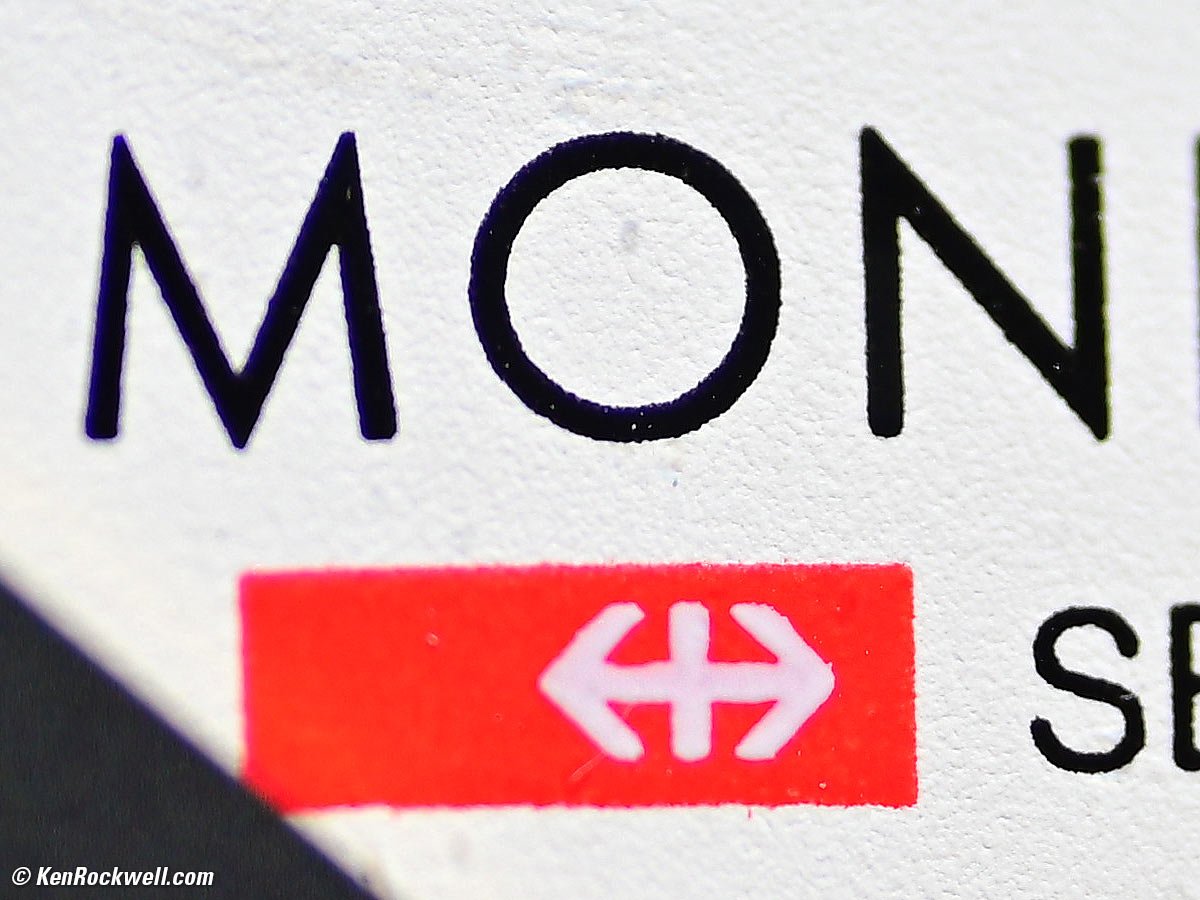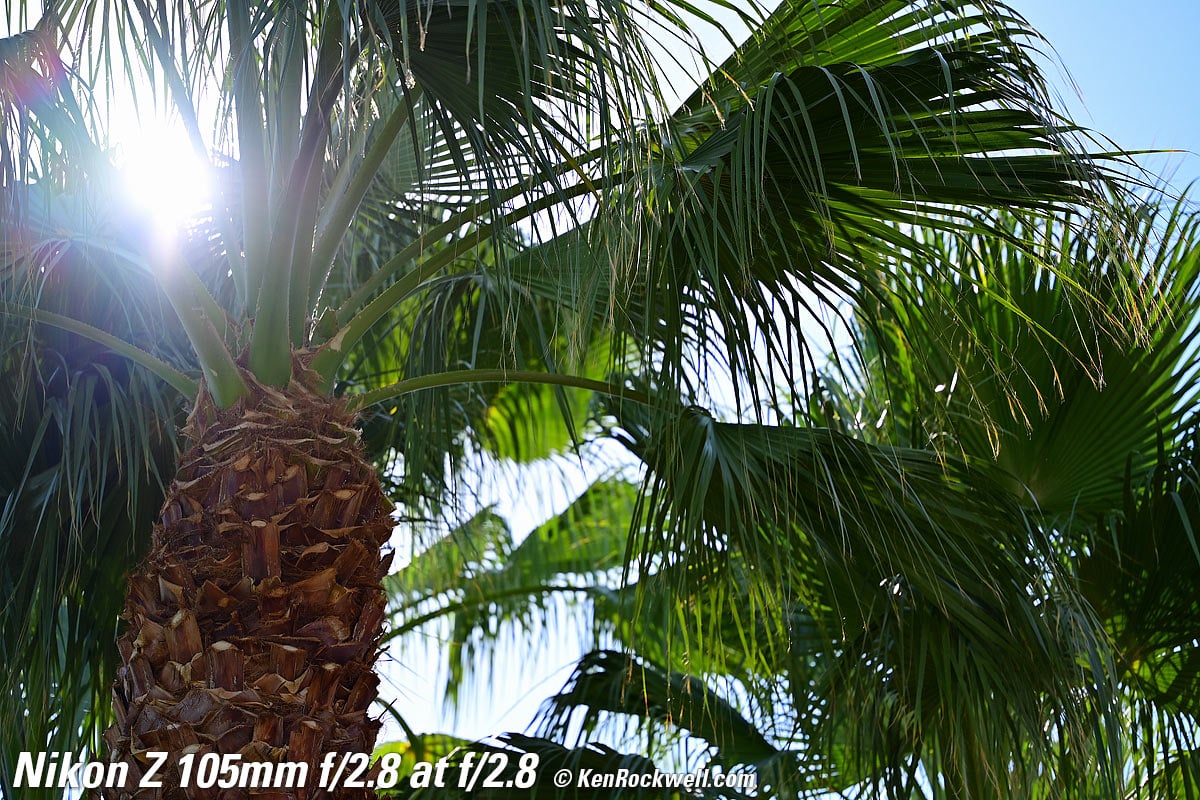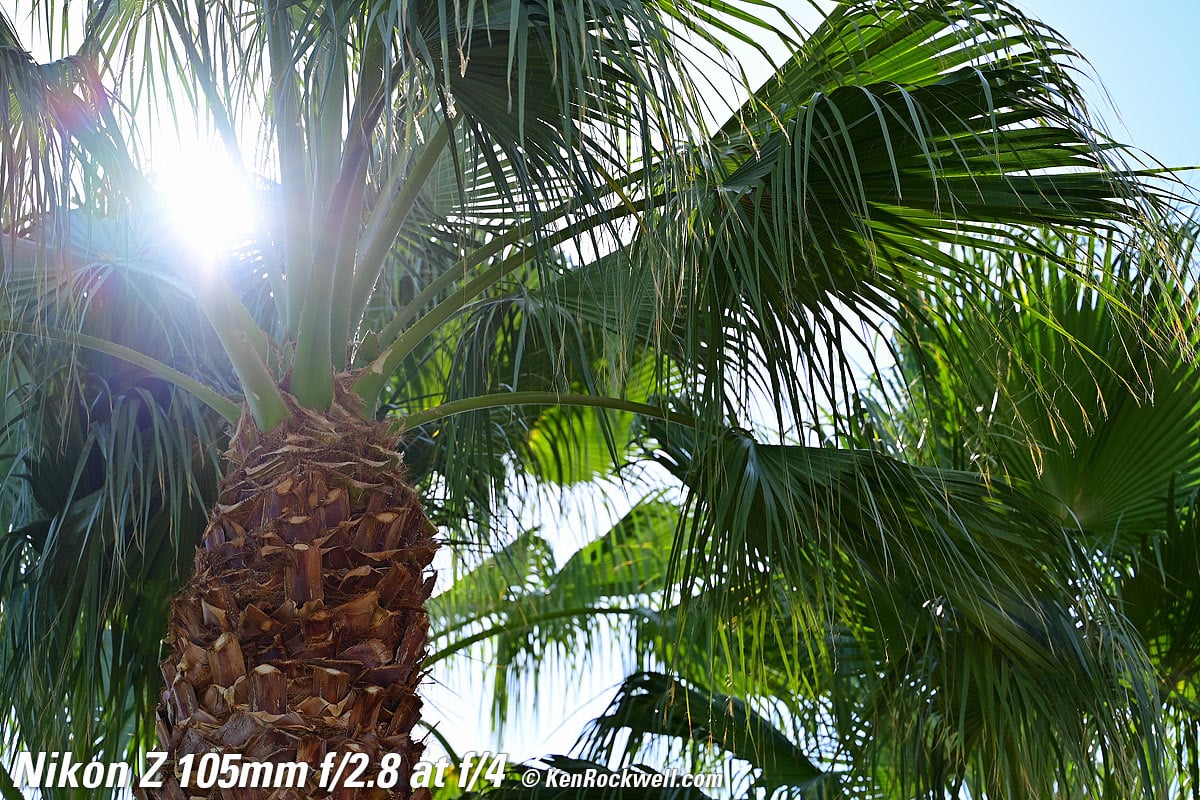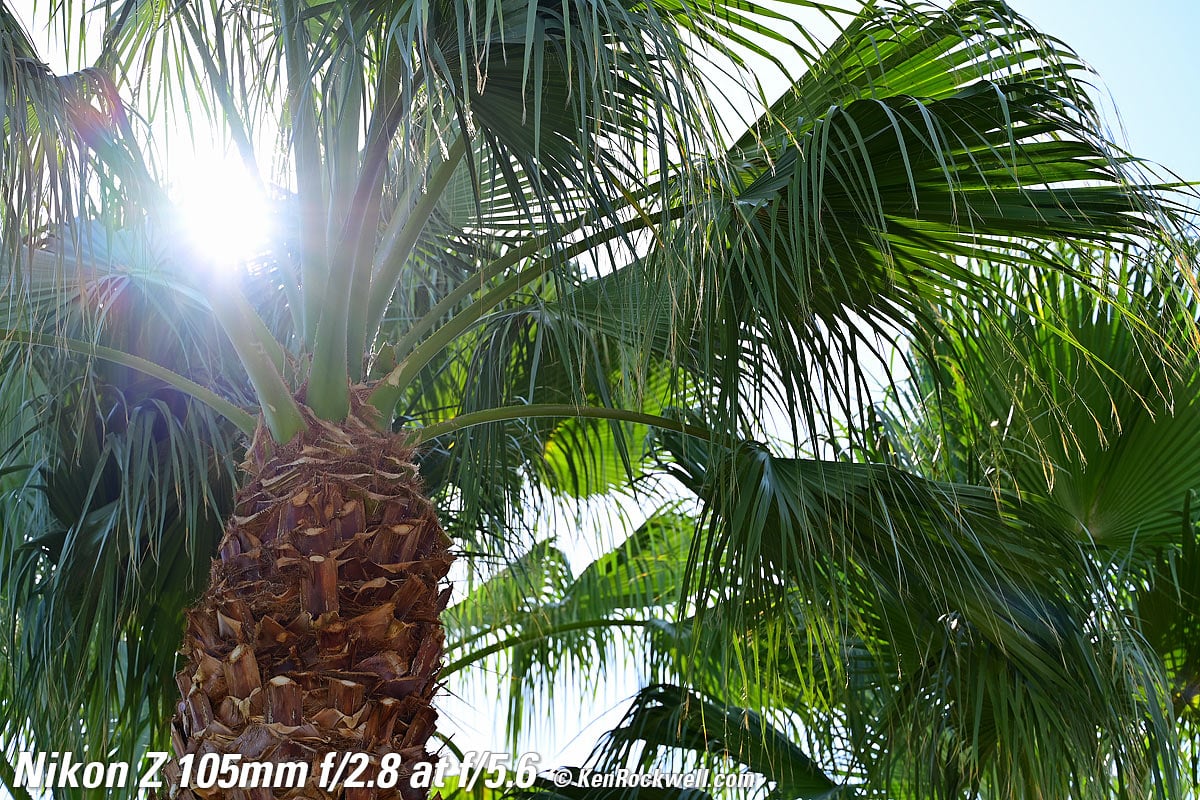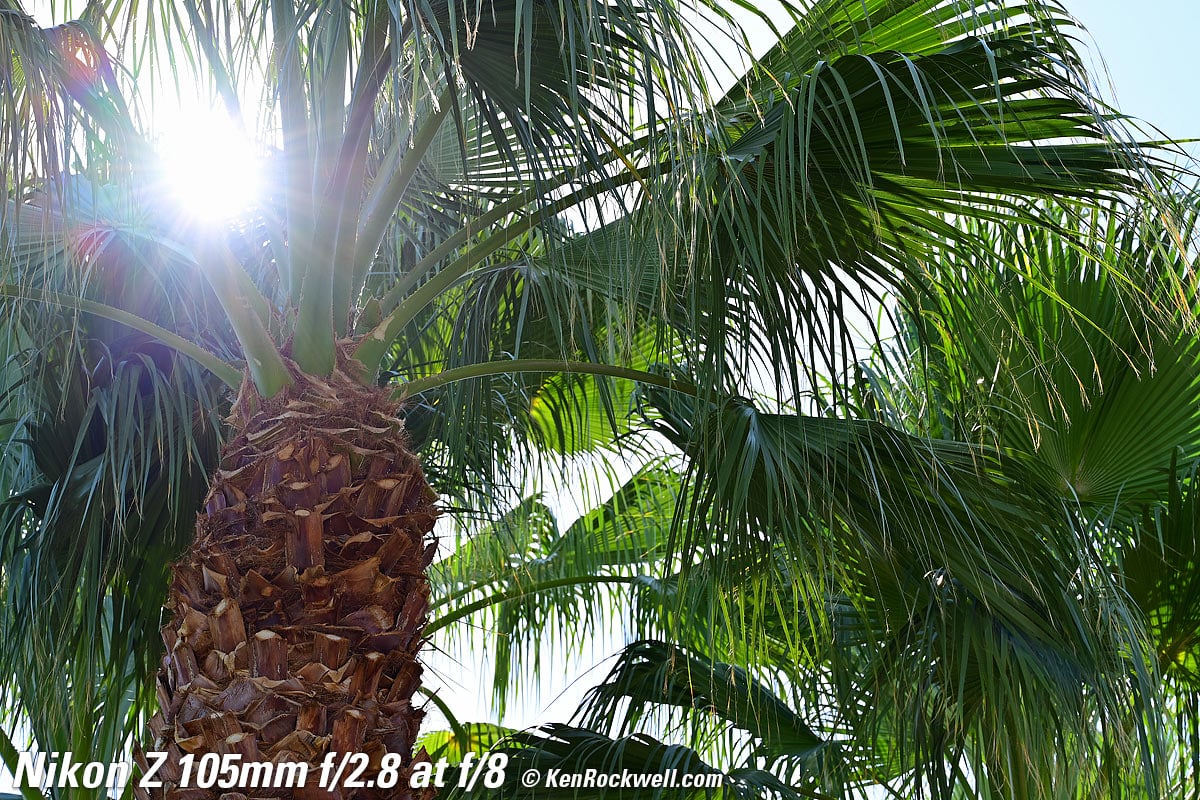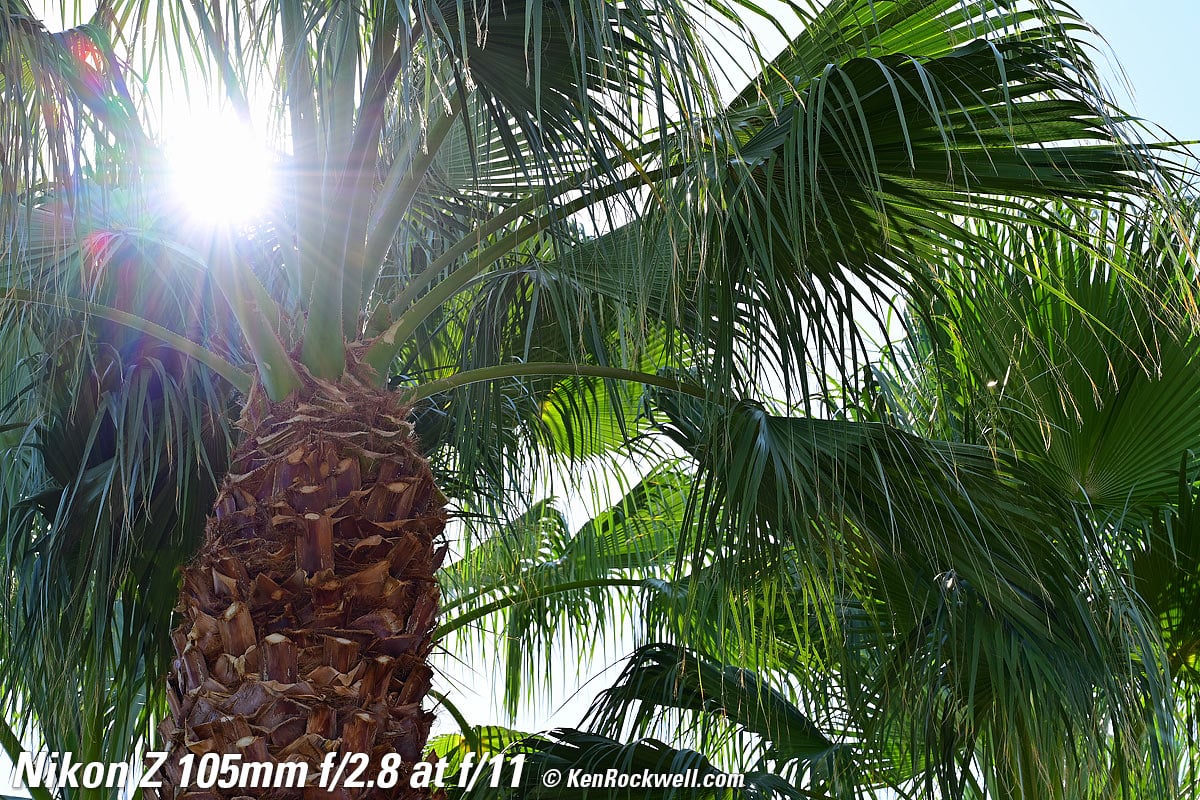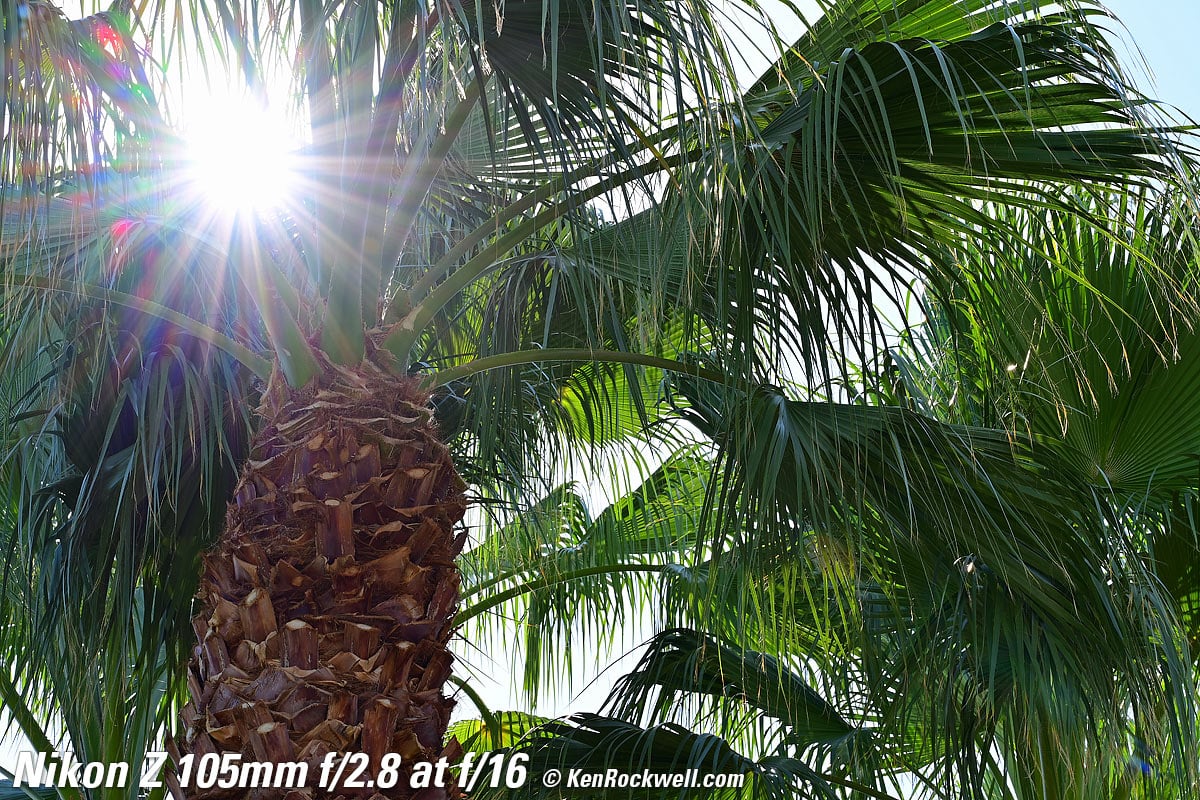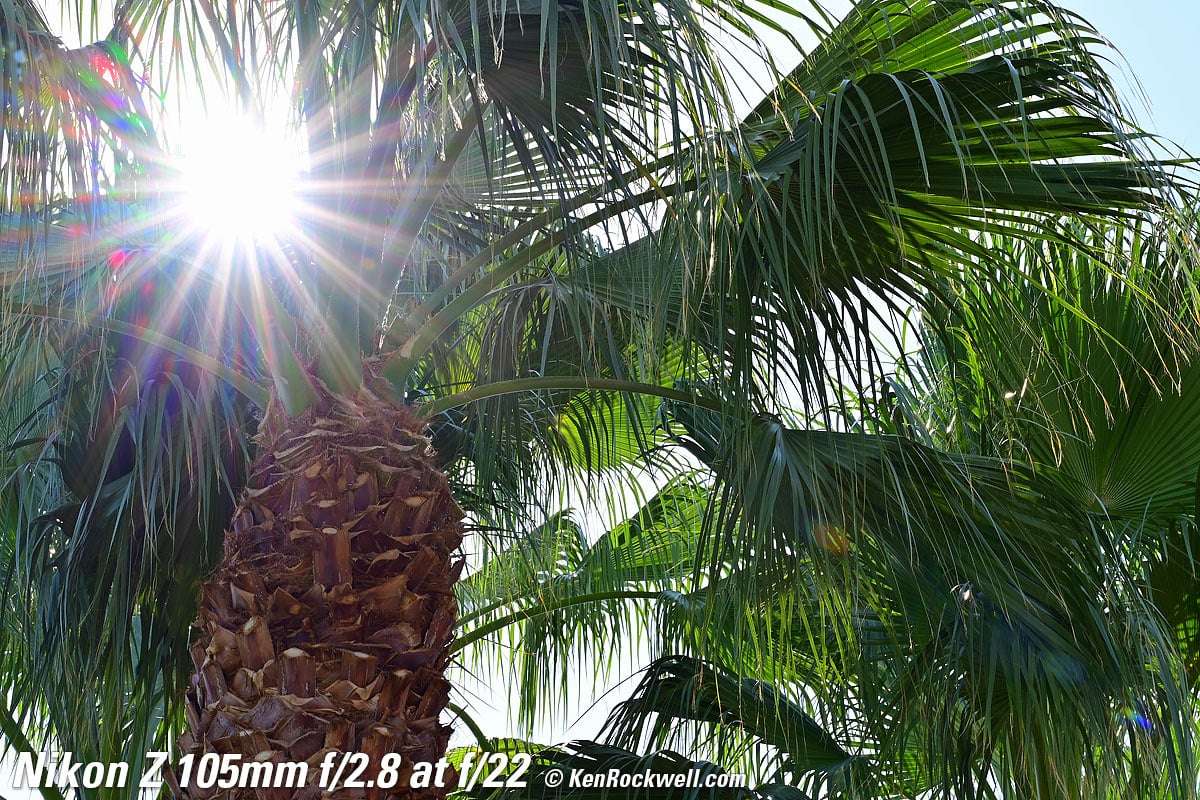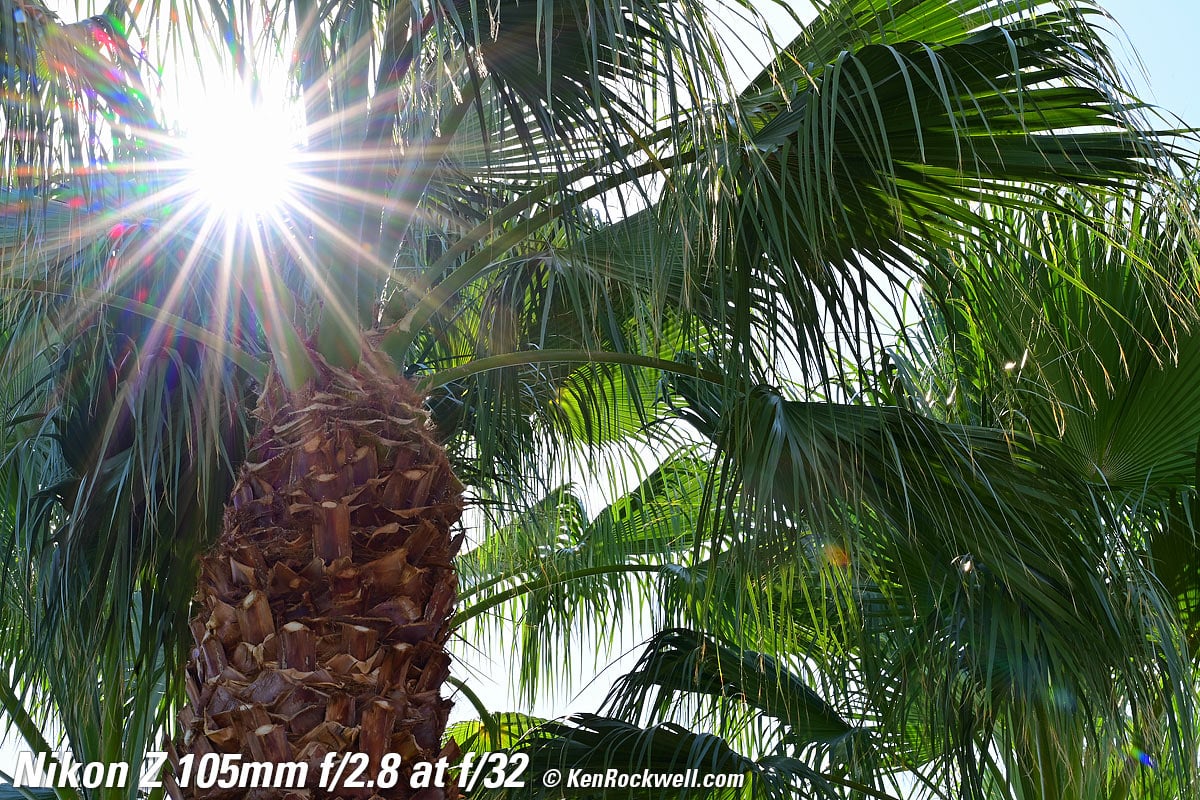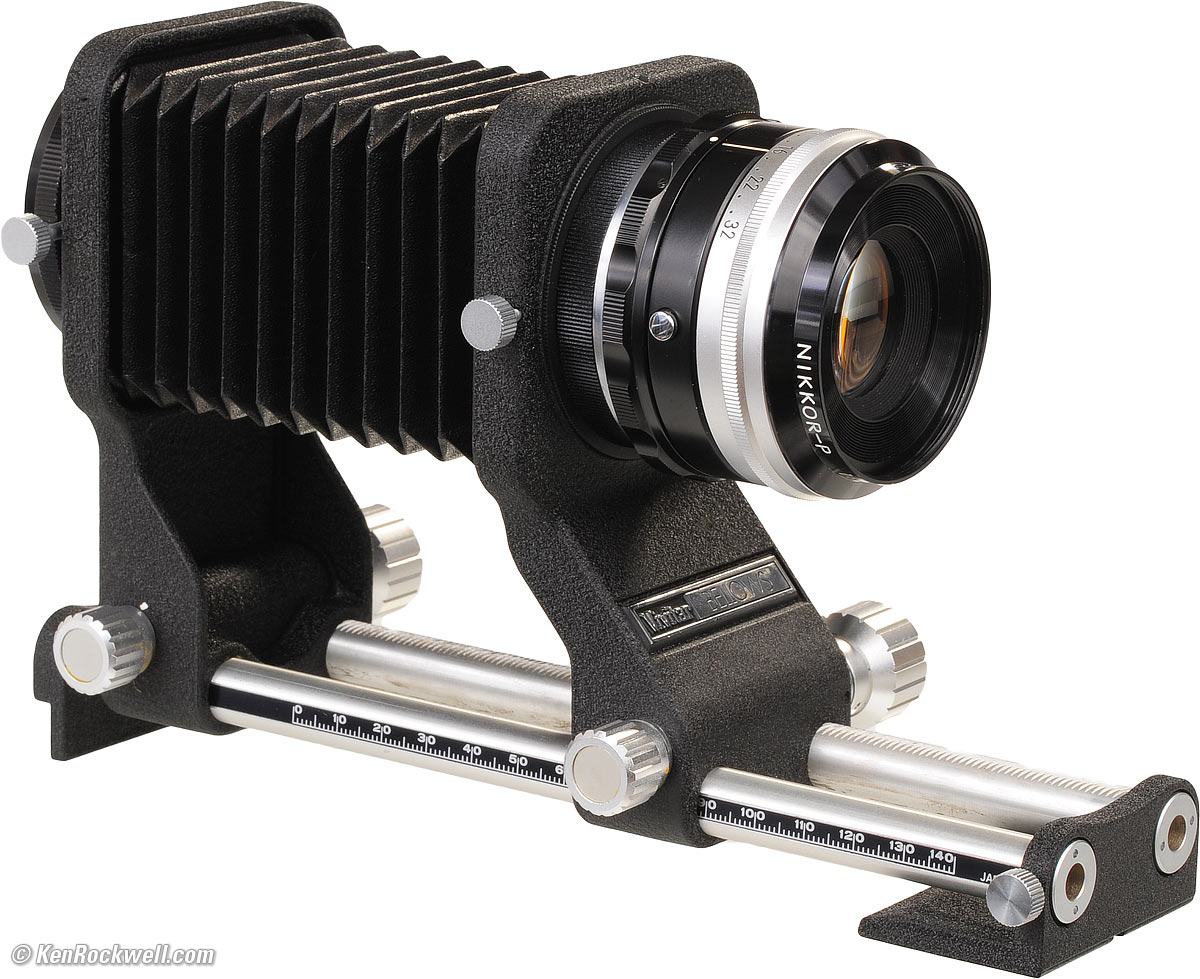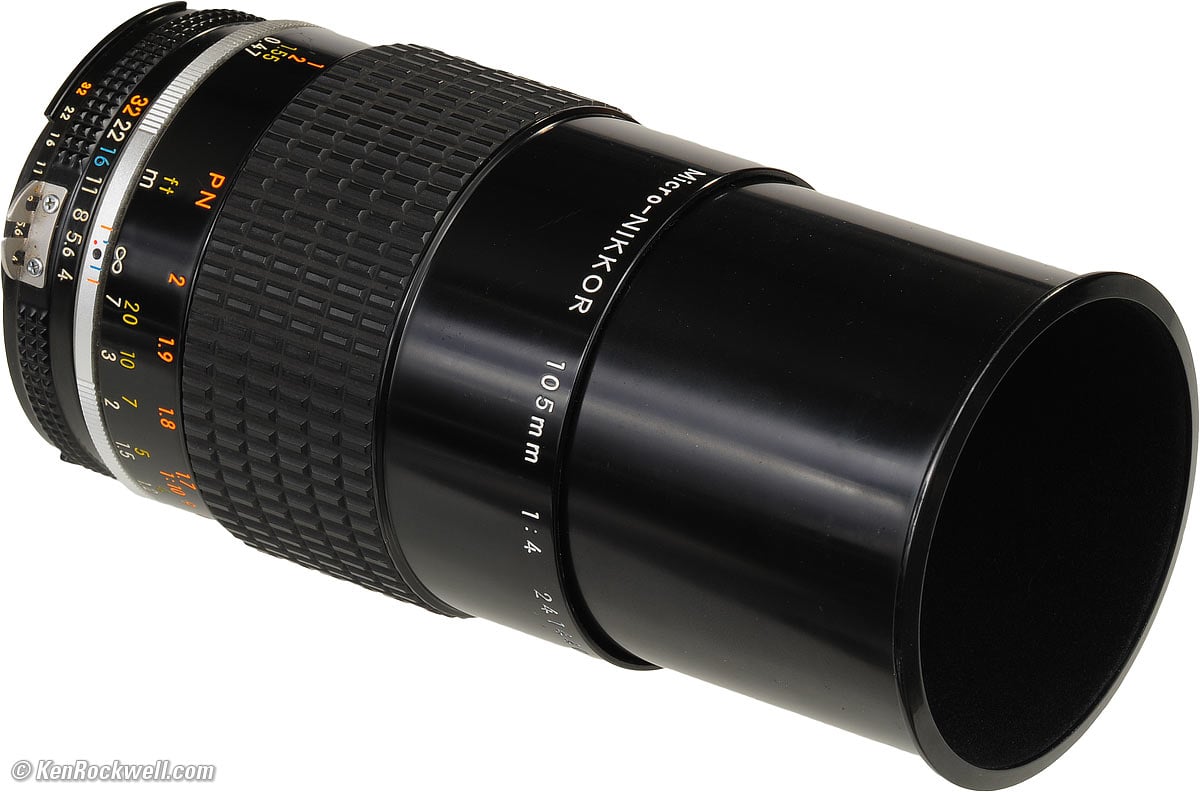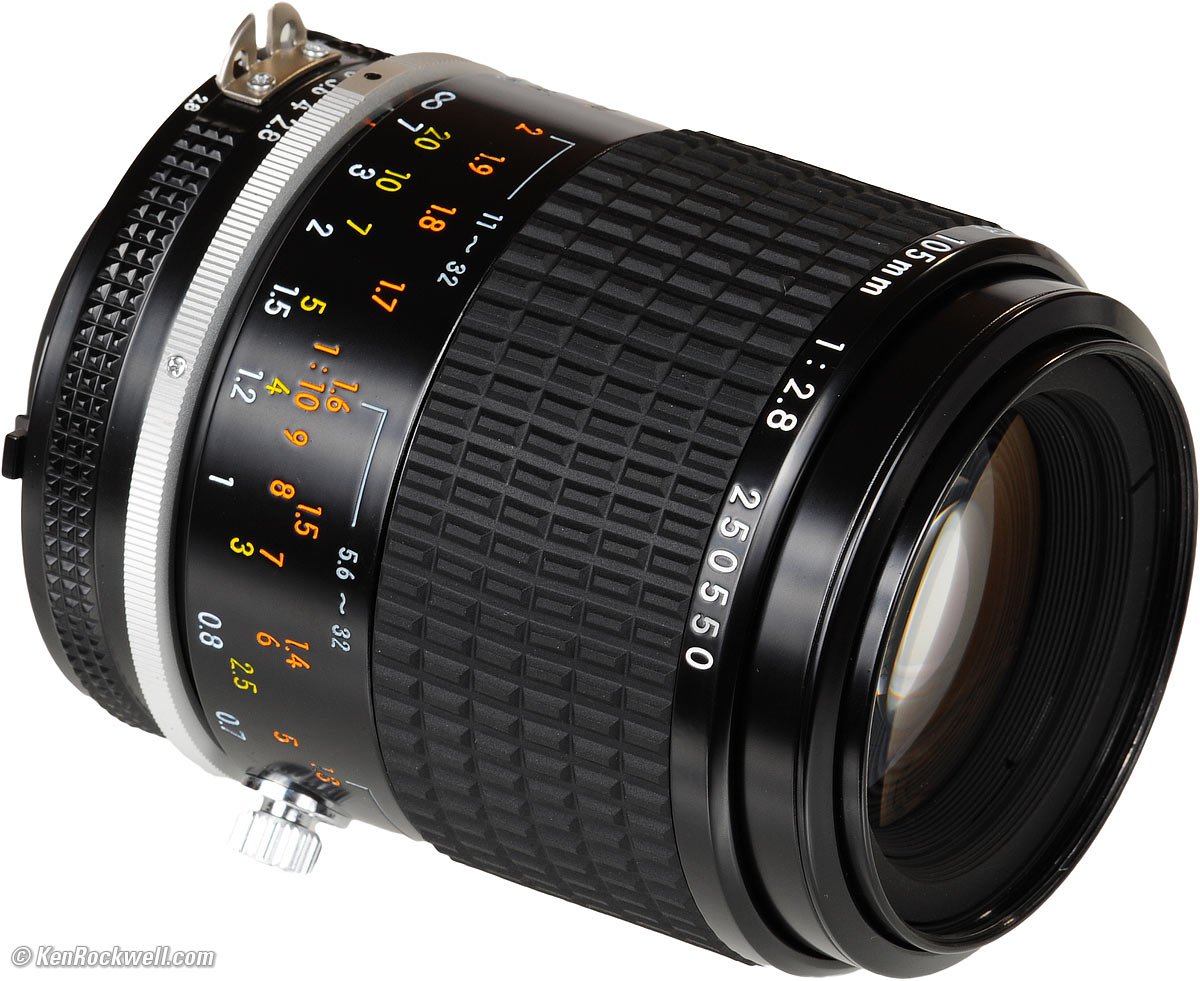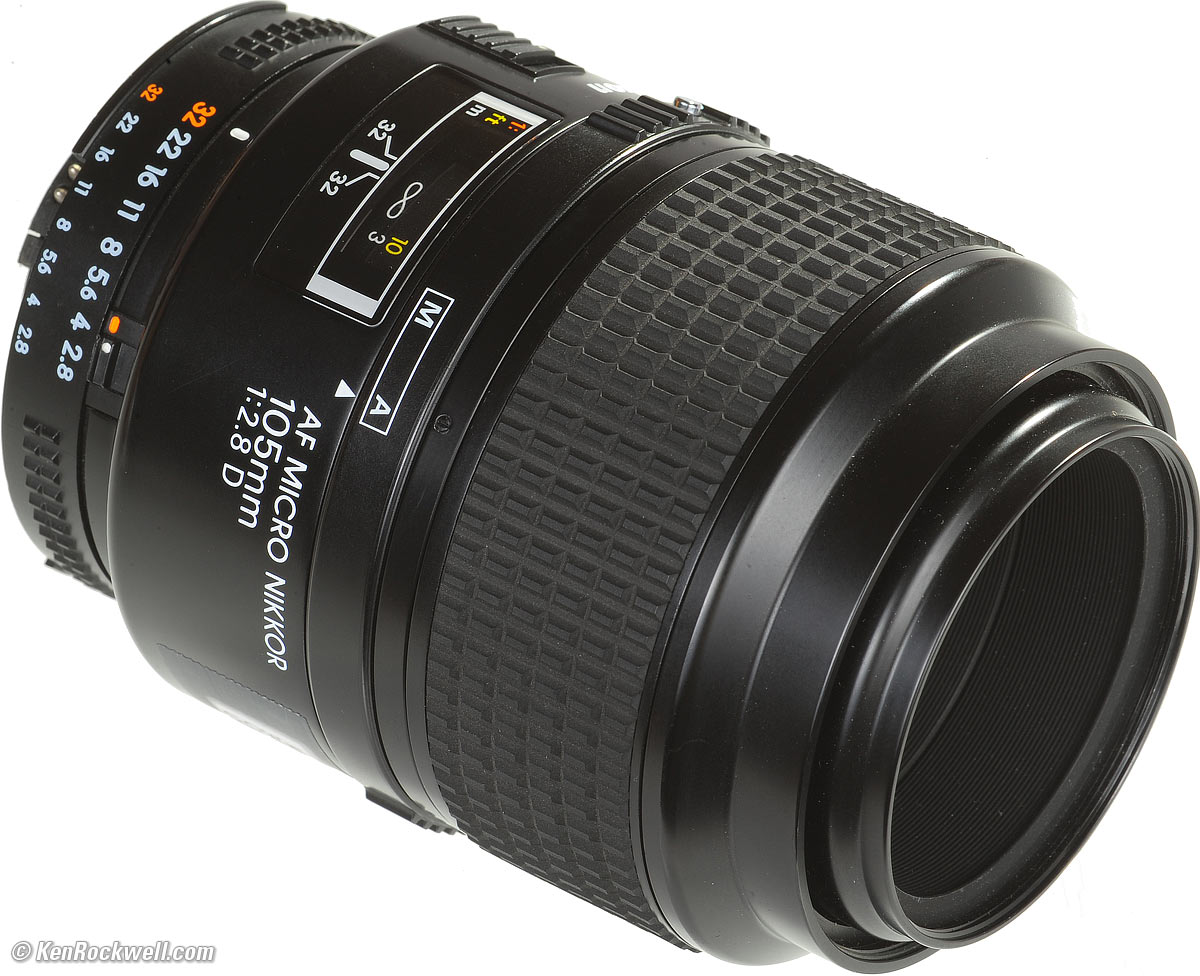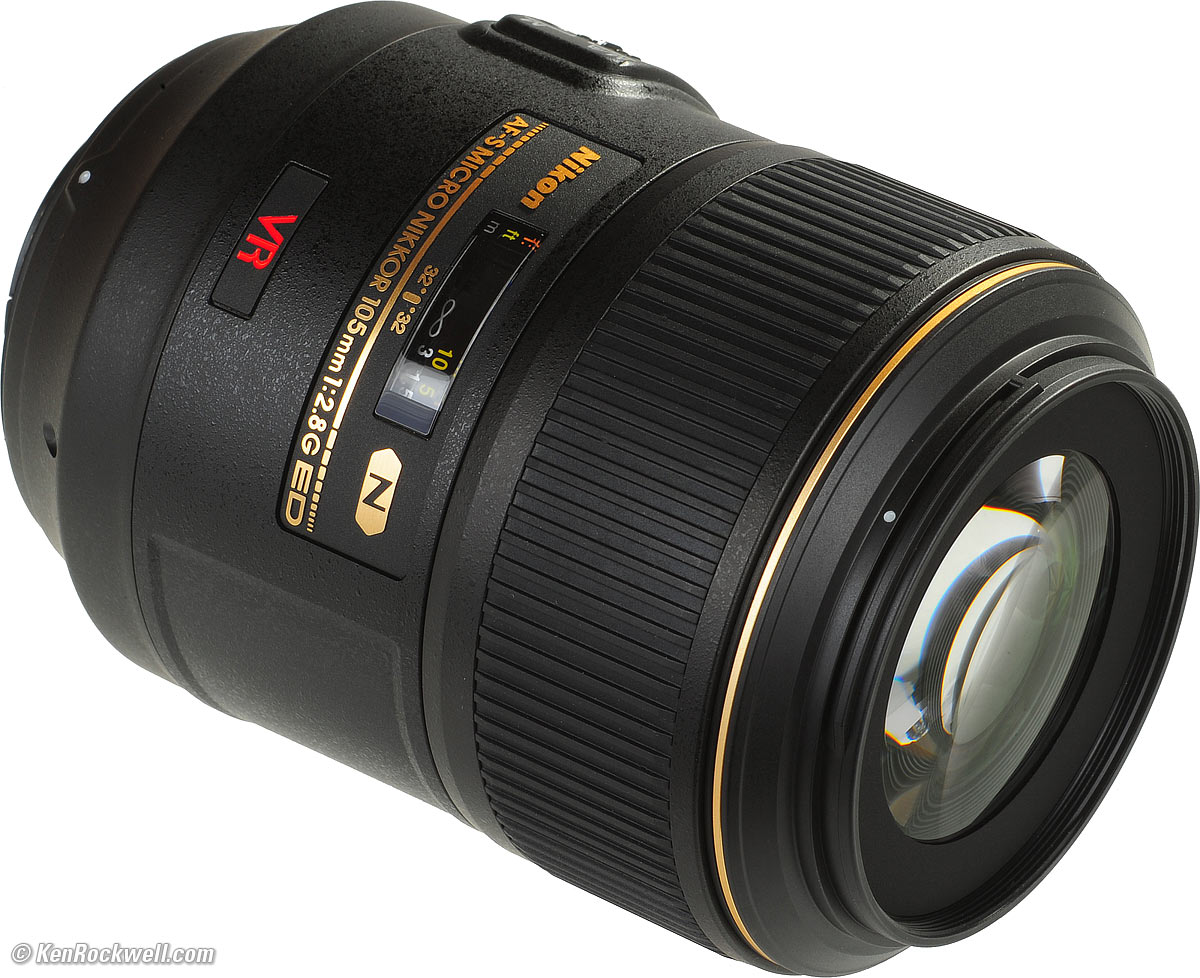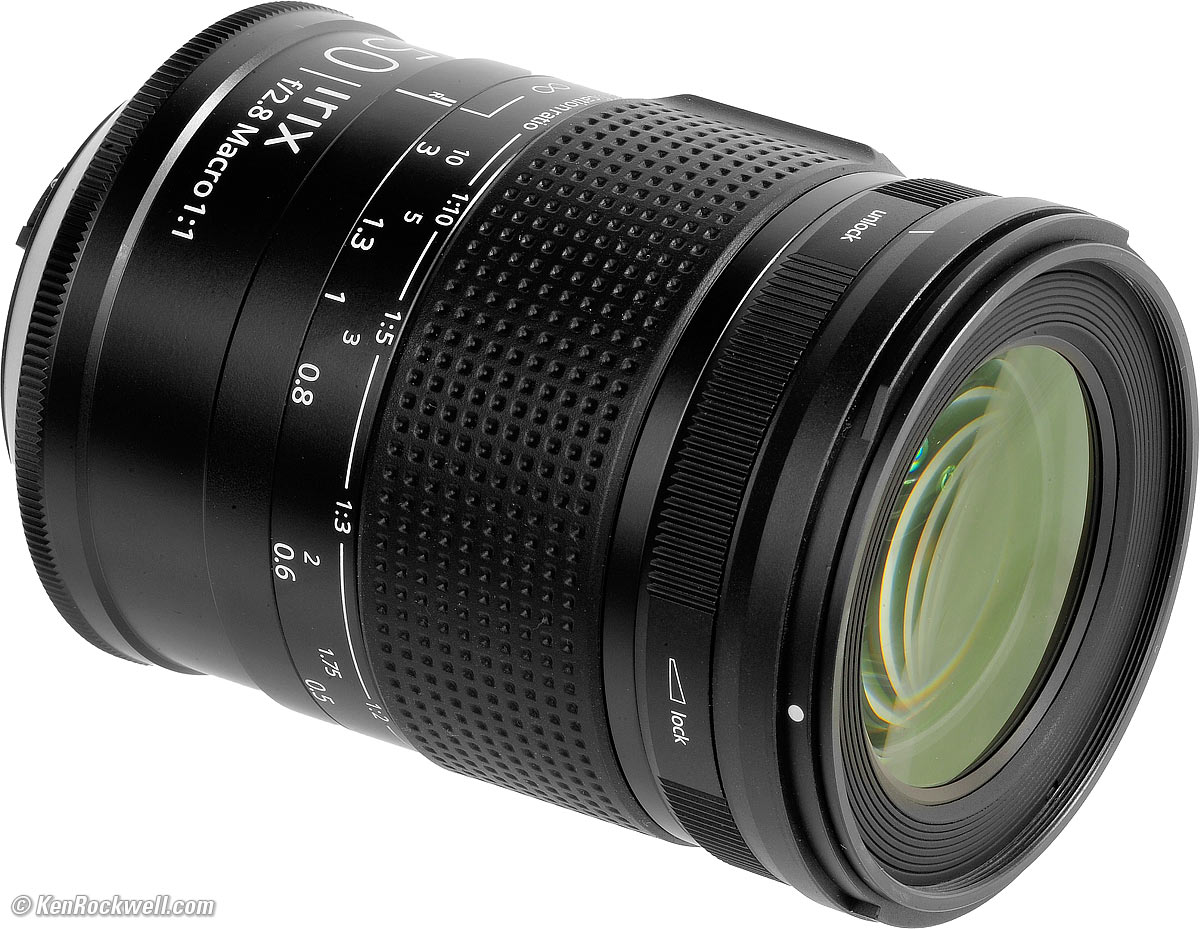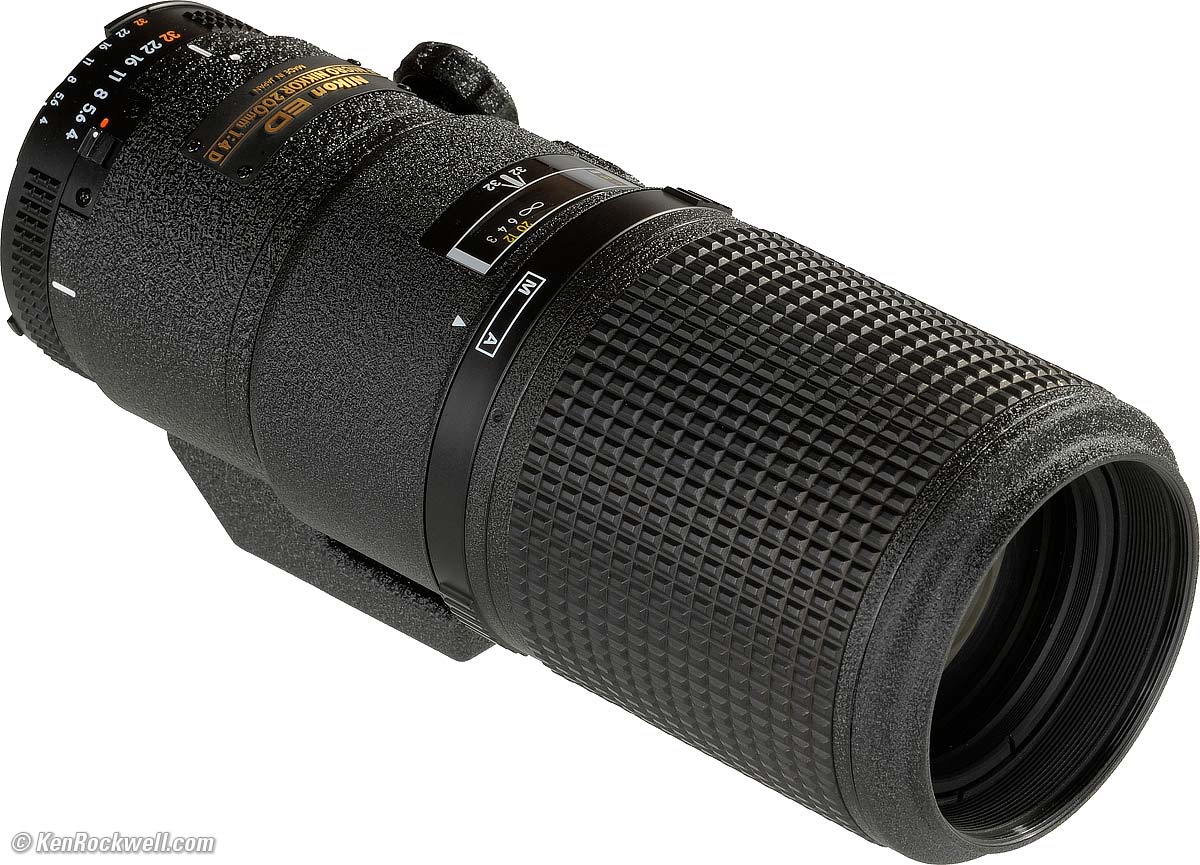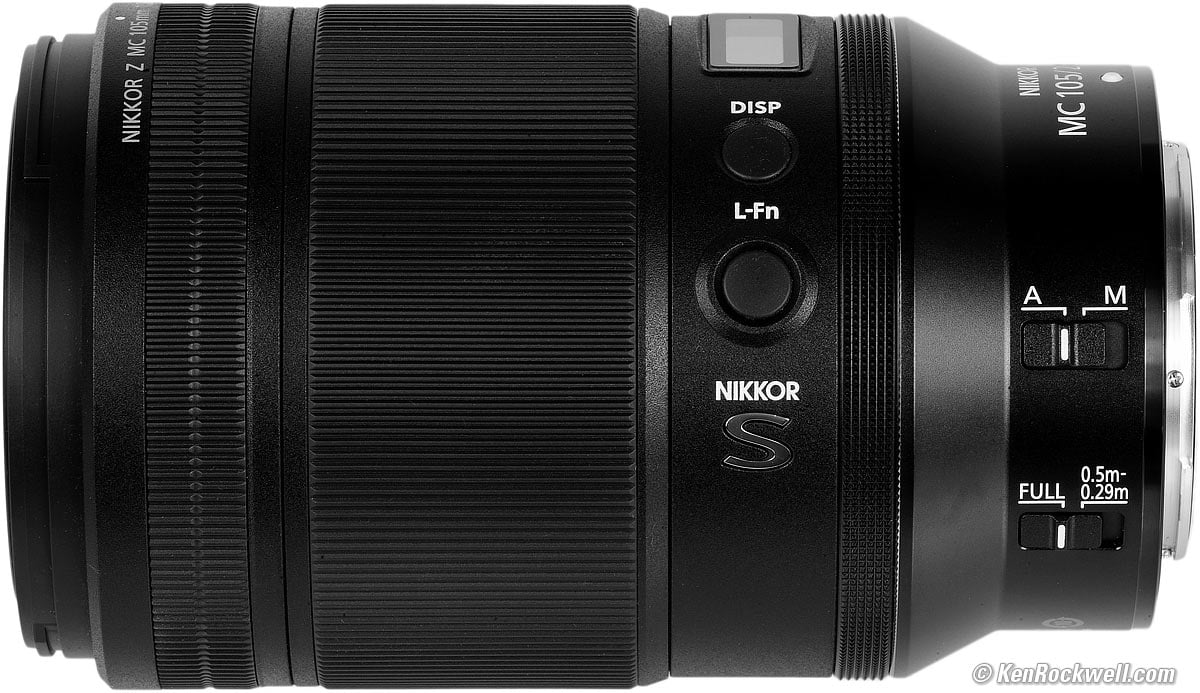Nikon Z 105mm f/2.8 VR Macro
Full-Frame 1:1 Macro (2021-)
How to Shoot Macro Best Macro Lenses Compared
New Good Bad Missing Format Compatibility
Specifications USA Version Performance
Comparisons User's Guide Recommendations
Z9 Z8 Z7 II Z6 II Zf Z7 Z6 Z5 Z fc Z50 Z30
Z System Z Lenses All Nikon Lenses Flash
Nikon Z 105mm f/2.8 VR Macro (62mm filters, 21.9 oz./ 622g, 1:1 macro at 0.96'/0.29m close focus, $997). bigger. I got mine at B&H . I'd also get it at Adorama, at Amazon or at Crutchfield, or used at eBay if you know How to Win at eBay.
This 100% all-content, junk-free website's biggest source of support is when you use those or any of these links to my personally approved sources I've used myself for way over 100 combined years when you get anything, regardless of the country in which you live — but I receive nothing for my efforts if you get it elsewhere. Nikon does not seal its boxes in any way, so never buy at retail or any other source not on my personally approved list since you'll have no way of knowing if you're missing accessories, getting a defective, damaged, returned, dropped, incomplete, gray-market, store demo or used lens — and all of my personally approved sources allow for 100% cash-back returns for at least 30 days if you don't love your new lens. I've used many of these sources since the 1970s because I can try it in my own hands and return it if I don't love it, and because they ship from secure remote warehouses where no one gets to touch your new lens before you do. Buy only from the approved sources I've used myself for decades for the best prices, service, return policies and selection.
August 2021 Better Pictures Nikon Mirrorless Mirrorless Lenses All Nikon Lenses Nikon Flash All Reviews
AF-S 105mm f/2.8 VR (2006-2021; works great on FTZ)
Why Fixed Lenses Take Better Pictures
Sample Images top
New Good Bad Missing Format Compatibility
Specifications USA Version Performance
Comparisons User's Guide Recommendations
More samples throughout this review at Bokeh, Macro, Spherochromatism and Sunstars.
These are just snapshots; my real work is in my Gallery.
These were shot as BASIC ★ JPGs; no NORMAL or FINE JPGs or RAW files were used or needed.
Wide-Open at f/2.8
2017 Specialized Tarmac Comp 58cm, Torch Edition with orange Presta valve caps, Shimano Dura-Ace CS-R9100 12-25T cassette, Shimano Integra FC-R8000 175mm 46-36T crankset, Shimano Dura-Ace PD-R9100 pedals and awesomely inexpensive ($14), light (24g) and strong carbon-fibre bottle cages, 10:56 AM, 17 July 2021. Nikon Z7 II, wide-open at f/2.8 at 1/1,600 at Auto ISO 64 (LV 14¼), exactly as shot. bigger or camera-original © JPG file.
As expected for a macro lens, it's ultrasharp even in the corners at f/2.8. In this case, I can read the microscopic lettering on my tire on the far left edge of the image:
1,200 × 900 pixel (6.8× magnification) crop from above. bigger or camera-original © JPG file.
At f/5.6
2017 Specialized Tarmac Comp 58cm, Torch Edition with orange Presta valve caps, Shimano Dura-Ace CS-R9100 12-25T cassette, Shimano Integra FC-R8000 175mm 46-36T crankset, Shimano Dura-Ace PD-R9100 pedals and awesomely inexpensive ($14), light (24g) and strong carbon-fibre bottle cages, 10:57 AM, 17 July 2021. Nikon Z7 II, f/5.6 at 1/640 at Auto ISO 6, -0.3 stops exposure compensation (LV 14.9). bigger or camera-original © JPG file.
It gets very slightly sharper at f/5.6; here's that same edge again:
1,200 × 900 pixel (6.8× magnification) crop from above. bigger or camera-original © JPG file.
Wide-Open at f/2.8
Palms and Mountains, 9:04 AM, 18 July 2021. Nikon Z7 II, wide-open at f/2.8 at 1/2,000 at Auto ISO 64 (LV 14.6), Perfectly Clear. bigger, full resolution or camera-original © JPG file.
You would never do this, but it's so sharp that even shooting wide-open in broad daylight it's ultra sharp right out to the corners, as you can see in the full-resolution file. I'm impressed; I didn't expect there to be enough depth-of-field to keep both sides in focus, but I lucked out; all the trees are sharp. Of course the distant mountains and foreground lake are not in focus.
Introduction top
New Good Bad Missing Format Compatibility
Specifications USA Version Performance
Comparisons User's Guide Recommendations
|
I buy only from these approved sources. I can't vouch for ads below. |
This is Nikon's medium-focal-length macro lens for their Z series of mirrorless cameras. It does the same thing as any of their older 105mm Micro lenses do on an adapter; they're all just as ultra-sharp and focus as close as each other (1:1). The differences are in the ergonomic details, not the optics.
This is because 100mm macro lenses are usually the sharpest lenses made by any camera maker. This comes from the fact that a 100mm lens is easy to design to be ultra-sharp because it's not wide enough for corner effects to be a problem, and it's not long enough for chromatic issues to be a big problem. Add to this that it's easy to design an ultrasharp f/2.8 fixed lens with only four elements, like Nikon's 100mm f/2.8 E, and most of these macro lenses today use three or more times as many elements. Add to this that all Nikon 105mm macro lenses since 1983 have use special "floating element" optics that continuously optimize themselves for every focussed distance, and thus every Nikon (and other brand) 100mm f/2.8 macro is far sharper than anyone will ever know.
Also knowing that depth-of-field is nearly nonexistent at macro ranges, even if there were optical differences among 100mm and 105mm macro lenses, you'd never see it as it would only be visible in a vapor-thing layer that is actually in perfect focus. Once stopped down to the smaller apertures like f/16 and smaller to get some depth-of-field, diffraction steps in and makes all lenses optically equal - again.
Nikon uses "Micro" and Macro" interchangeably. Ever since the 1950s Nikon preferred to call them Micro, which confused people, so for the first time now in 2021 Nikon has called this lens simply "Macro" — but wait! Nikon for some nutty reason instead chose to mark the lens as "MC," which usually stands for Multi Coating, but on this lens means "Macro."
Just turn the focus ring at any time for manual-focus override.
I got my Z 105 Macro at B&H . I'd also get it at Adorama, at Amazon or at Crutchfield, or eventually used at eBay if you know How to Win at eBay.
New intro top
 Nikon's first 105mm lens for their Z mount.
Nikon's first 105mm lens for their Z mount.
 Nikon's first 105mm lens with an OLED screen. So?
Nikon's first 105mm lens with an OLED screen. So?
 Rated 4.3 oz. (122g), measured 4.6 oz. (130g) lighter than the AF-S 105mm f/2.8 VR.
Rated 4.3 oz. (122g), measured 4.6 oz. (130g) lighter than the AF-S 105mm f/2.8 VR.
 Nikon's first macro or 105mm lens with a "Lens Function" button, which usually is a focus lock.
Nikon's first macro or 105mm lens with a "Lens Function" button, which usually is a focus lock.
Good intro top
 Superb optics.
Superb optics.
 Full-time manual-focus override, just turn the big ring.
Full-time manual-focus override, just turn the big ring.
 Compensating Aperture, as many Nikon macros have had but Canon has not. The effective aperture does not change as you focus, so you don't have to change the aperture setting to maintain the same effective manual exposure as you focus in and out with a normal lens. On the flip side, this also means that the indicated maximum aperture decreases to f/4.5 at 1:1, which historically has confused many non-pro macro shooters who think there's something wrong with their lens while in fact this is something very right with their lens. The laws of physics are such that lenses almost always become slower as focused into the macro range, but not all lenses show this as accurately as this lens does. Bravo!
Compensating Aperture, as many Nikon macros have had but Canon has not. The effective aperture does not change as you focus, so you don't have to change the aperture setting to maintain the same effective manual exposure as you focus in and out with a normal lens. On the flip side, this also means that the indicated maximum aperture decreases to f/4.5 at 1:1, which historically has confused many non-pro macro shooters who think there's something wrong with their lens while in fact this is something very right with their lens. The laws of physics are such that lenses almost always become slower as focused into the macro range, but not all lenses show this as accurately as this lens does. Bravo!
 AF - MF switch on-lens.
AF - MF switch on-lens.
 Extra control ring.
Extra control ring.
 Fluorine front coating to help resist crud.
Fluorine front coating to help resist crud.
 L-Fn button, usually Focus Lock unless you program it otherwise in your camera.
L-Fn button, usually Focus Lock unless you program it otherwise in your camera.
 Weather resistant.
Weather resistant.
 Focus range limiter.
Focus range limiter.
 Extra rubber grip ring at front is useful for hand-holding, mounting and unmounting.
Extra rubber grip ring at front is useful for hand-holding, mounting and unmounting.
 Image Stabilization (VR) rated 4 stops improvement. Uses Voice Coil Motors.
Image Stabilization (VR) rated 4 stops improvement. Uses Voice Coil Motors.
Bad intro top
 Electronic manual focus. There is no mechanical connection between lens and the focus ring. There is always a slight time delay between when you turn the ring and the lens responds, which becomes more annoying as you use the lens longer.
Electronic manual focus. There is no mechanical connection between lens and the focus ring. There is always a slight time delay between when you turn the ring and the lens responds, which becomes more annoying as you use the lens longer.
 Plastic filter threads and mostly plastic exterior.
Plastic filter threads and mostly plastic exterior.
 Offshored to Thailand, not made domestically in Japan.
Offshored to Thailand, not made domestically in Japan.
Missing intro top
 No VR switch on lens; you have to find this in the menu system of your camera.
No VR switch on lens; you have to find this in the menu system of your camera.
Nikon Z 105mm f/2.8 VR Macro. bigger.
Format top
New Good Bad Missing Format Compatibility
Specifications USA Version Performance
Comparisons User's Guide Recommendations
I got my Z 105 Macro at B&H . I'd also get it at Adorama, at Amazon or at Crutchfield, or eventually used at eBay if you know How to Win at eBay.
This is a full frame FX lens, and I'm reviewing it as such.
It works great on DX cameras, too, on which you may make the usual inferences.
Compatibility top
New Good Bad Missing Format Compatibility
Specifications USA Version Performance
Comparisons User's Guide Recommendations
I got my Z 105 Macro at B&H . I'd also get it at Adorama, at Amazon or at Crutchfield, or eventually used at eBay if you know How to Win at eBay.
This lens works only on Nikon's Z-series mirrorless cameras.
It does not so much as even mount on any other camera.
Specifications top
New Good Bad Missing Format Compatibility
Specifications USA Version Performance
Comparisons User's Guide Recommendations
I got my Z 105 Macro at B&H . I'd also get it at Adorama, at Amazon or at Crutchfield, or eventually used at eBay if you know How to Win at eBay.
Name specifications top
Nikon calls this the NIKKOR Z MC 105mm f/2.8 VR S:
NIKKOR: Nikon's brand name for all their lenses.
Z: For Nikon's mirrorless cameras.
MC: Macro lens.
VR: Vibration Reduction.
S: Subliminally suggests sexual satisfaction. The "S" designation has no other purpose than subliminal seduction; Nikon and electronics and automobile and every kind of marketer have been using letters like "S" and "X" in model numbers since the 1940s for this same reason. Nikon called their first 1946 rangefinder lens mount the "S" mount, then went whole-hog to the "F" SLR mount in 1959, used "S" again when they updated their AI lenses to AI-"S" in 1983, created AF-"S" SWM lenses in 1998 and here it is again.
It also has:
AF-P: Stepper (Pulse) autofocus motor: silent and ultra fast.
ARNEO Coat: Magic anti-reflection coating that's especially good for use in high-speed lenses.
Aspherical: Specially curved glass elements for sharper pictures.
D: Couples distance information to the 3D Matrix Meter.
E: Electronic diaphragm. Silent operation, but only works with cameras introduced since about 2007.
ED: Magic Extra-low Dispersion glass for reduced secondary chromatic aberration.
G: Gelded; has no aperture ring.
IF: Internal focusing; nothing moves externally as focused.
Nano Crystal Coat (N): Magic anti-reflection coating that has a variable index of refraction that's far more effective against ghosts and internal reflections than traditional multicoating.
Ø62: 62mm filter thread.
Optics specifications top
Nikon internal optical construction. Aspherical and ED elements.
16 elements in 11 groups.
3 ED extra-low dispersion elements, which help reduce secondary axial chromatic aberration.
1 Aspherical element.
Multiple focus groups.
ARNEO Coat: Magic anti-reflection coating that's especially good for use in high-speed lenses.
Nano Crystal Coat (N): Magic anti-reflection coating that has a variable index of refraction that's far more effective against ghosts and internal reflections than traditional multicoating.
Nikon Super Integrated multicoating (SIC).
Fluorine front coating to resist dirt and smudges.
Diaphragm specifications top
Nikon Z 105mm f/2.8 VR Macro. bigger.
9 rounded blades.
Electronically actuated.
Stops down to f/32 at infinity or f/51 at 1:1.
Filters specifications top
Plastic 62mm filter thread.
Focal Length specifications top
105 mm.
When used on DX cameras, it sees the same angle of view as a 160mm lens sees when used on an FX or 35mm camera.
See also Crop Factor.
Angle of View specifications top
23⅙º diagonal on FX.
15⅓º diagonal on DX.
Autofocus specifications top
Multiple focus groups.
No external movement as focussed, so no air or dust is sucked in.
Focus Scale specifications top
Yes, on OLED display.
Infinity Focus Stop specifications top
No.
You have to focus somehow to get precise focus at infinity, just like at every other distance.
Depth of Field Scale specifications top
Yes, on OLED display.
Infrared Focus Index specifications top
No.
Close Focus (distance from subject to image plane) specifications top
0.96 feet (0.29 meters).
Working Distance (distance from subject to front of lens at close-focus distance) specifications top
At 1:1 Close-Focus Distance.
5.28" (134mm) from front of lens to subject at 1:1 ratio.
Much less if you use the hood.
Maximum Reproduction Ratio specifications top
1:1 (1.0 ×).
Reproduction Ratio Scale specifications top
Yes, on OLED display.
Image Stabilizer specifications top
Rated 4.5 stops improvement.
Caps specifications top
LC-62B 62 mm snap-on front cap, included.
LF-N1 Z-mount rear cap, included.
Hood specifications top
Nikon HB-99 Hood for Z 105mm f/2.8 VR Macro. bigger.
HB-99 plastic bayonet hood, included.
Locking pawl; you have to press a button to remove it. Bravo!
Case specifications top
Nikon CL-C2 case. This is a case? bigger.
CL-C2 "case," included.
They're kidding, right? It's just a bag, and not even padded. Geesh.
Tripod Collar specifications top
None.
The lens is light enough that they're no need for a tripod collar.
Size specifications top
3.4" ø maximum diameter × 5.6" extension from flange.
85 mm ø maximum diameter × 140 mm extension from flange.
Weight specifications top
21.930 oz. (621.7g) actual measured weight.
Rated 22.2 oz. (630 g).
Quality specifications top
Made in Thailand:
Nikon Z 105mm f/2.8 VR Macro. bigger.
Announced specifications top
12:08 AM, Tuesday, 01 June 2021, NYC time.
Shipping Since specifications top
Tuesday, 29 June 2021.
Included specifications top
HB-99 hood.
LC-62B 62 mm snap-on front cap.
LF-N1 Z-mount rear cap.
CL-C2 sack.
Nikon's Model Number specifications top
20100.
Price, U. S. A. specifications top
July 2022
$997 at B&H, at Adorama, at Amazon or at Crutchfield,
About $800 used if you know How to Win at eBay.
June ~ July 2021
$997 at B&H, at Adorama, at Amazon and at Crutchfield.
Box, Nikon Z 105mm f/2.8 VR Macro. bigger.
Box End, Nikon Z 105mm f/2.8 VR Macro. bigger.
Getting a Legitimate U. S. A. Version top
New Good Bad Missing Format Compatibility
Specifications USA Version Performance
Comparisons User's Guide Recommendations
I got my Z 105 Macro at B&H . I'd also get it at Adorama, at Amazon or at Crutchfield, or eventually used at eBay if you know How to Win at eBay.
This section applies in the U. S. A. only.
A genuine U. S. A. version has a USA Warranty Card like this, and the serial number must match the one on the bottom of your lens, otherwise you have no warranty:
U. S. A. Warranty Card. bigger.
If you don't have this card, if the card doesn't say "VALID IN THE CONTINENTAL UNITED STATES" or the serial number on the card doesn't match the one on your lens exactly, you got ripped off with a gray market version from another country. All legitimate lenses come with printed warranty cards, even if you prefer to register online. (The serial number on the box doesn't have to match, but if it doesn't it means you bought from a shady dealer who took lenses out of boxes and then resold these used lenses as new.)
Nikon stopped offering 5-year lens warranties in 2021 in an effort to save themselves money at our expense.
Did you notice the clever nod to ancient computer technology? This is printed on tractor-fed paper with tear-off sides and dot-matrix printing of model and serial numbers! If your card lacks these side perforations, beware. Everyone counterfeits laser holograms, but few people have dot-matix printers floating around to fake these.
Always be sure to check your box, warranty card and serial numbers while you can still return it, or just don't buy from unapproved sources or at retail so you'll be able to have your camera serviced and get free updated firmware as needed.
This is why I never buy anyplace other than from my personally approved sources. You just can't take the chance of buying elsewhere, especially at any retail store, because non-USA versions have no warranty in the U. S. A., and you won't even be able to get firmware or service for it — even if you're willing to pay out-of-pocket for it when you need it!
Nikon U. S. A. enforces its trademarks strictly. It's unlikely, but possible that US customs won't let your lens back in the country if you bought a gray-market version in the U. S. A., carried it overseas, and try to bring it back in. (If you take the chance of buying one overseas, be sure you have a receipt to prove you bought it overseas and be prepared to pay duty on it.)
If a gray market version saves you $500 it may be worth it, but for $200 or less I wouldn't risk having no warranty or support.
Get yours from the same places I do and you won't have a problem, but if you take the risk of getting yours elsewhere, be sure to check everything while you still can return it.
Performance top
New Good Bad Missing Format Compatibility
Specifications USA Version Performance
Comparisons User's Guide Recommendations
Overall Autofocus Manual Focus Breathing
Bokeh Distortion Ergonomics Falloff Filters
Flare & Ghosts Lateral Color Fringes
Maximum & Minimum Apertures Mechanics
I got my Z 105 Macro at B&H . I'd also get it at Adorama, at Amazon or at Crutchfield, or eventually used at eBay if you know How to Win at eBay.
Overall performance top
The Z 105 is the best macro you can get that's dedicated to the Z mount, but it's not much different from using the tougher AF-S 105/2.8 VR on the FTZ.
Optics, as expected, are flawless.
Autofocus performance top
Autofocus speed is is moderately slow, but the good news is that autofocus never gets stuck if you're very far out of focus. Even if the focus is set to the opposite end of the range, it figures it out and finds focus.
The autofocus motor is not silent; you can hear a slight hum as it works.
Manual Focus performance top
Manual focusing is entirely electronic; the manual focus ring isn't connected to anything other than a digital encoder.
The focus motor is not silent; you can hear a slight hum as it works.
Sadly like most electronic focus systems, there is a slight delay from when you turn the ring until the lens responds. While this seems very minor if you're just playing around with the lens, in actual use if you're trying to set precise focus this delay can drive you nuts.
Manual focus speed is about right; it's about the right compromise between precision and speed.
Just grab the electronic focus ring at any time for manual-focus override anytime the camera is awake.
Better than any other brand, even if you're in AF-C and grab the manual-focus ring, it just swaps to manual focus instantly and stays in manual focus. Other brands will try to fight you for focus if you're in continuous AF, while this lens just does what you tell it to do.
Focus Breathing performance top
Focus breathing is the image changing size as focused in and out. It's important to cinematographers that the image not breathe because it looks funny if the image changes size as focus gets pulled back and forth between actors. If the lens does this, the image "breathes" by growing and contracting slightly as the dialog goes back and forth.
The image from this lens grows as focused more closely.
Bokeh performance top
Bokeh, the feel, character or quality of out-of-focus areas as opposed to how far out of focus they are, is neutral at large apertures and becomes poor at small apertures. Blur circles are just circles at large apertures, but start having rings around them at small apertures.
Here are photos from headshot distance. Due to the compensating aperture system that always indicates the actual effective aperture as focused more closely, f/3 is the largest aperture available this close.
Click any for the © camera-original file:
Scarecrow Owl, 19 July 2021, shot on Nikon Z7 II at 1/640, 1/200, 1/50, and 1/13 at ISO 64.
Due to the compensating aperture system that always indicates the actual effective aperture as focused more closely, f/3 is the largest aperture available this close.
As always, if you want to throw the background as far out of focus as possible, shoot wide-open and get as close as possible.
Distortion performance top
Shot with the default of Distortion Correction ON, there is no distortion.
If you turn off in-camera correction and then go out of your way looking for it, the Nikon Z 105 Macro has a small amount of barrel distortion, which corrects fully with a factor of +1.00 in Photoshop's lens correction filter.
If you shoot raw and use non-manufacturer software to process the raw data into images, that software is unlikely to be able to correct the distortion as is done in-camera as JPGs.
These aren't facts or specifications, they are the results of my research that requires hours of photography and calculations on the resulting data.
Ergonomics performance top
Nikon Z 105mm f/2.8 VR Macro. bigger. |
Nikon Z 105mm f/2.8 VR Macro. bigger. |
The slim rubber ring at the front is just for grip. It's handier than you'd expect. It's great for holding the lens steady while shooting, and also a Godsend for mounting and unmounting the lens.
Otherwise ergonomics aren't as fluid as you'd hope.
The electronic focus system is nowhere near as satisfying as a real direct mechanical focus system. This is because there is always a slight delay from when you turn the ring to when the focus shifts. It's only a small fraction of a second, but if you're experienced at focus, it's annoying.
The OLED display is just a gimmick because it turns off after a few seconds so you have to keep hitting the button. It does show distance and depth-of-field, reproduction ratio or aperture; just tap the button until you see what you want.
The programmable L-Fn button and AF/MF switches are very handy. It's a crime that Nikon has cheaped-out and pulled the AF-MF switch from many of their other lenses.
Nikon did pull the VR switch from this lens; there is none and there should be. Now you have to go into the camera's menu system to try to find it.
Falloff performance top
Falloff on FX is invisible with the camera's Vignette Correction set to its default of NORMAL.
I've greatly exaggerated the falloff by shooting a gray field and placing these on a gray background; it will not look this bad in actual photos of real things:
Falloff on FX at infinity, Vignette Control NORMAL:
© 2021 KenRockwell.com. All rights reserved. |
If you out of your way to turn off Vignette Control and look for falloff, you may see some at f/2.8, but in actual photography there isn't anything visible by f/4:
Falloff on FX at infinity, Vignette Control OFF:
© 2021 KenRockwell.com. All rights reserved. |
Filters, use with performance top
There's no need for thin filters. I can use quite a stack of 62mm filters without vignetting, so go ahead and use your standard rotating polarizer and grad filters.
Flare & Ghosts performance top
No problem.
See examples at Sunstars.
Lateral Color Fringes performance top
There are no color fringes as shot on Nikon cameras as JPG, which by default correct for any that may be there.
if you shoot raw and then use non-manufacturer software to process that data into images then there is the possibility that there might be some, but I doubt it.
Lens Corrections performance top
The Z7 II, Z6 II, Z7, Z6, and Z5 correct for any or all of distortion, diffraction and falloff, any of which you may turn ON or OFF.
The Z7 II, Z6 II, Z7, Z6, and Z5 always correct for lateral color fringes (lateral chromatic aberration), this is part of Nikon's secret sauce and never appears in any menu.
Macro Performance performance top
Macro works great; no surprise here.
Wide-Open (f/4.5 at 1:1)
It's ultrasharp wide-open, which is an effective aperture of f/4.5 at 1:1.
The depth-of-field for all macro lenses is approximately zero at these close distances wide-open. Very little is in focus and this is as straight as I could align the watch, so only some sections of the face are in focus. The rest is out of focus and not supposed to be sharp.
Casio G-Shock Solar Atomic Watch at 1:1 close-focus distance, 19 July 2021. Nikon Z7 II, f/4.5 at 1/320 at ISO 64 (LV 13⅓). bigger or camera-original © file.
1,200 × 900 pixel (6.8× magnification) crop from above. bigger or camera-original © file.
If this 1,200 × 900 pixel crop is about 3" (7.5cm) wide on your screen, the complete image would print at a large 14 × 21″ (35 × 55 cm) at this same high magnification.
If this 1,200 × 900 pixel crop is about 6" (15cm) wide on your screen, the complete image would print at a huge 27½ × 41¼″ (70 × 105 cm) at this same high magnification.
If this 1,200 × 900 pixel crop is about 12" (30cm) wide on your screen, the complete image would print at a mammoth 55 × 82½″ (1.4 × 2.1 meters) at this same extremely high magnification!
At f/16
It's super sharp at f/16 because much more is in focus — but still not that much. This is how macro works at these distances; there is always very little in focus and that's the biggest block to getting sharp pictures; not your lens. As expected if you look closely, while more is in focus at f/16, the peak sharpness is less due to diffraction.
The depth-of-field for all macro lenses is still approximately zero at f/16 at these close distances wide-open. Very little is in focus and this is as straight as I could align the watch, so only some sections of the face are in focus. The rest is out of focus and not supposed to be sharp.
Casio G-Shock Solar Atomic Watch at 1:1 close-focus distance, 19 July 2021. Nikon Z7 II, f/16 at 1/125 at ISO 360 (LV 13.1). bigger or camera-original © file.
1,200 × 900 pixel (6.8× magnification) crop from above. bigger or camera-original © file.
If this 1,200 × 900 pixel crop is about 3" (7.5cm) wide on your screen, the complete image would print at a large 14 × 21″ (35 × 55 cm) at this same high magnification.
If this 1,200 × 900 pixel crop is about 6" (15cm) wide on your screen, the complete image would print at a huge 27½ × 41¼″ (70 × 105 cm) at this same high magnification.
If this 1,200 × 900 pixel crop is about 12" (30cm) wide on your screen, the complete image would print at a mammoth 55 × 82½″ (1.4 × 2.1 meters) at this same extremely high magnification!
Maximum & Minimum Apertures performance top
Because the Z 105 always shows the effective aperture as focused, the maximum aperture becomes smaller as focused more closely.
Back in the olden days we used to have to calculate this manually based on lens extension and reproduction ratio, while this lens correctly corrects itself.
While of course you can't get an effective aperture of f/2.8 at close distances, more important is that once you set any aperture of f/4.5 or smaller that exposure will not change as you focus at any distance. Bravo!
Repro Ratio |
Maximum Aperture |
Minimum Aperture |
| ∞ ~ 1:15 | f/2.8 |
f/32 |
| 1:14 ~ 1:5 | f/3 |
f/36 |
| 1:4.9 ~ 1:3.1 | f/3.2 |
f/36 |
| 1:3 ~1:2.1 | f/3.3 |
f/40 |
| 1:2 ~ 1:1.8 | f/3.5 |
f/40 |
| 1:1.7 ~ 1:1.5 | f/3.8 |
f/45 |
| 1:1.5 ~ 1:1.4 | f/4 |
f/45 |
| 1:1.35 ~ 1:1.2 | f/4.2 |
f/51 |
| 1:1.1 ~ 1:1 | f/4.5 |
f/51 |
Mechanical Quality performance top
Nikon Z 105mm f/2.8 VR Macro. bigger
This is mostly plastic inside and outside, with glass glass and what seems like an aluminum — not brass — mount.
Hood
Plastic locking bayonet.
Front Bumper
None.
Filter Threads
Plastic.
Hood Bayonet Mount
Plastic.
14 kt Gold ED Band
None.
Front Barrel Exterior
Plastic.
Focus Ring
Rubber-covered plastic.
Mid-Barrel Exterior
Section with OLED window: plastic.
OLED Window
Plastic.
DISP and L-FN Button Covers
Rubber.
Slide Switches
Plastic.
Second Function Ring
Hard plastic.
Rear Barrel Exterior
Metal.
Internals
Seem like mostly plastic, with some metal.
Dust Gasket at Mount
Yes.
Mount
Seems like aluminum, not sturdy brass.
Markings
Some just painted, while others engraved and filled with paint.
Serial Number
Nikon Z 105mm f/2.8 VR Macro. bigger.
Laser engraved in black-on-black on bottom of barrel.
Identity
Printed on top front of barrel.
Also engraved and filled with paint on top rear of barrel.
Date Code
None found.
Noises When Shaken
Mild to moderate clunking.
Made in
Made in Thailand.
Sharpness performance top
Lens sharpness has nothing to do with picture sharpness; every lens made in the past 100 years is more than sharp enough to make super-sharp pictures if you know what you're doing. The only limitation to picture sharpness is your skill as a photographer. It's the least talented who spend the most time worrying about lens sharpness and blame crummy pictures on their equipment rather than themselves. Skilled photographers make great images with whatever camera is in their hands; I've made some of my best images of all time with an irreparably broken camera! Most pixels are thrown away before you see them, but camera makers don't want you to know that.
If you're not getting ultra-sharp pictures with this, be sure not to shoot at f/11 or smaller where all lenses are softer due to diffraction, always shoot at ISO 100 or below because cameras become softer at ISO 200 and above, avoid shooting across long distances over land which can lead to atmospheric heat shimmer, be sure everything is in perfect focus, set your camera's sharpening as you want it (I set mine to the maximum) and be sure nothing is moving, either camera or subject. If you want to ensure a soft image with any lens, shoot at f/16 or smaller at ISO 1,600 or above at default sharpening in daylight of subjects at differing distances in the same image.
People worry waaaaay too much about lens sharpness. It's not 1968 anymore when lenses often weren't that sharp and there could be significant differences among them; today they are all pretty much equally fantastic.
This lens is ultra-sharp in the lab from corner to corner at every aperture except for diffraction which plagues all lenses at the smallest apertures.
As this is a macro lens, be forewarned that nothing is ever in focus at macro distances other than a vapor thin imaginary plane that probably never intersects with your subject. The biggest problem in pro macro shooting is trying to get your subject to lay flat enough to stay in a very thin plane of focus, even at f/32.
Nikon's MTF chart at 10 cyc/mm and 30 cyc/mm. The solid lines are the sagittal (radial) and the dotted lines are the meridional (tangential) measurements.
Spherochromatism performance top
Spherochromatism, also called secondary spherical chromatic aberration or "color bokeh," is an advanced form of spherical and chromatic aberration in a different dimension than lateral chromatic aberration. It happens mostly in fast normal and tele lenses when spherical aberration at the ends of the color spectrum are corrected differently than in the middle of the spectrum. Spherochromatism can cause colored fringes on out-of-focus highlights, usually seen as green fringes on backgrounds and magenta fringes on foregrounds. Spherochromatism is common in fast lenses of moderate focal length when shooting contrasty items at full aperture. It goes away as stopped down.
It has almost no spherochromatism:
Mondaine A132.30348.11SBB at close-focus distance wide-open at f/4.5, 19 July 2021. bigger or camera-original © file.
1,200 × 900 pixel (6.8× magnification) crop from above. bigger or camera-original © file.
If this 1,200 × 900 pixel crop is about 3" (7.5cm) wide on your screen, the complete image would print at a large 14 × 21″ (35 × 55 cm) at this same high magnification.
If this 1,200 × 900 pixel crop is about 6" (15cm) wide on your screen, the complete image would print at a huge 27½ × 41¼″ (70 × 105 cm) at this same high magnification.
If this 1,200 × 900 pixel crop is about 12" (30cm) wide on your screen, the complete image would print at a mammoth 55 × 82½″ (1.4 × 2.1 meters) at this same extremely high magnification!
VR Image Stabilization performance top
Vibration Reduction (VR) or Optical Image Stabilization (OIS) works quite well, at least as used on my Z7 II, which adds its own internal sensor-shift stabilization to the lens' own optical stabilization.
"Percent Perfectly Sharp Shots" are the percentage of frames with 100% perfect tripod-equivalent sharpness I get when I'm shooting hand-held while free-standing with no support or bracing. Hand tremor is a random occurrence, so at marginal speeds some frames will be perfectly sharp while others will be in various stages of blur — all at the same shutter speed. This rates what percentage of shots are perfectly sharp, not how sharp are all the frames.
As shot on a Z7 II with it's own internal stabilization:
| % Perfectly Sharp Shots | 1 |
1/2 |
1/4 |
1/8 |
1/15 |
1/30 |
1/60 |
1/125 |
1/250 |
| All stabilization ON | 17 |
0 |
0 |
17 |
83 |
83 |
100 |
100 |
100 |
| All stabilization OFF | 0 |
0 |
0 |
0 |
0 |
17 |
17 |
50 |
83 |
I see about a 3.7 stop real-world improvement, which is pretty good. None of these systems actually meets their claimed performance when tested as I do for perfect, tripod-equivalent sharpness, so getting 3.7 stops of real world performance is good. This is on a Z7 II, which has its own internal stabilization in addition to the optical stabilization in the lens.
Sunstars performance top
With a 9-bladed rounded diaphragm, I get 18-pointed sunstars on brilliant points of light only at the smallest apertures.
Ignore the the vertical smear at large apertures, this is is a sensor artifact called interline transfer smear and not a lens defect.
Likewise ignore the crazy red, green and blue dots at small apertures; these are sensor artifacts caused by taking a picture directly of the sun and exposing for the dark underside of a huge palm tree, and using that same palm tree to hide the sky to accentuate the stars.
Click any to enlarge:
Click any to enlarge.
History & Comparisons top
New Good Bad Missing Format Compatibility
Specifications USA Version Performance
Comparisons User's Guide Recommendations
I got my Z 105 Macro at B&H . I'd also get it at Adorama, at Amazon or at Crutchfield, or eventually used at eBay if you know How to Win at eBay.
Nikon has been making 105mm macro (also called "Micro") lenses for over 50 years. All of these lenses have superb optics as described at the beginning. The real differences are ergonomics and what features or not work on a mirrorless camera today.
For me, serious macro work is done with strobes so motion and VR don't matter, and I focus manually, so just about any of these gives the same results as this newest Z lens.
The real reason for this newest Z lens is hand-held use as a general-purpose and close-focussing, stabilized medium telephoto. While most of the older lenses lack VR and autofocus as used on the FTZ, the newest of these older lenses, the current AF-S 105mm f/2.8 VR, works magnificently on the FTZ with full AF and VR.
Nikon NIKKOR-P 105mm f/4 and Vivitar bellows. enlarge.
Nikon's first 105mm Micro-NIKKOR was a 5-element, 3-group f/4 design sold in a short mount, meaning that it had to be attached to a bellows.
The advantage is that you get continuous focus from infinity to larger than life, however, the necessity of carrying a big bellows made it less attractive for general photography.
This version was single-coated, which is more than adequate for this simple design, and had a wonderful 12-bladed preset diaphragm.
To select an aperture, press both unlock buttons on the middle black ring, and rotate the middle black ring to the desired aperture. To focus, turn the rearmost ring to the left to open the diaphragm to f/2.8. To meter or shoot, flick the rear ring to the right; it will stop exactly at the set and locked aperture. Flick the rear ring back and forth as you focus and shoot. Now do you appreciate the automatic diaphragms we've had in most conventional lenses since the 1960s?
This setup works great on a Z camera with the FTZ or other adapter, and of course focus and diaphragm control are manual.
Nikon made about 7,000 of these short-mount lenses.
The first focusing (conventional barrel) 105mm f/4 was for the Nikon F. It uses the same optics as the short-mount lens above, and now is multicoated.
It focuses to 1:2 or half life size. Nikon sold an extension tube which was used to get to 1:1 life size.
It won't mount on most 35mm SLRs and DSLRs unless it is first updated to AI, which isn't a big deal, but why bother when you can buy the newer versions below for the same price?
This works great on a Z camera with the FTZ or other adapter, and of course focus and diaphragm control are manual.
Nikon made about 13,000 of these.
The AI version of the 105mm f/4 Micro-NIKKOR is wonderful, since it works on almost all Nikon cameras.
It focuses to 1:2 or half life size. Nikon sold an extension tube which was used to get to 1:1 life size.
It uses the same optics as the lenses above and is multicoated.
This works great on a Z camera with the FTZ or other adapter, and of course focus and diaphragm control are manual.
Nikon made about 44,000 of these.
The AI-s version of the f/4 does the same thing as the AI version; the difference being that the focus ring stays put so that the depth-of-field scale is engraved on the silver ring as dots, and not as lines etched on the black barrel.
It focuses to 1:2 or half life size. Nikon sold an extension tube which was used to get to 1:1 life size.
It uses the same optics as the lenses above and is multicoated.
This works great on a Z camera with the FTZ or other adapter, and of course focus and diaphragm control are manual.
Nikon made about 25,000 of these.
Nikon 105mm f/2.8 AI-s. enlarge.
This first f/2.8 Micro-NIKKOR was introduced in 1983, and was sold new through about 2020. It has 10 elements in 9 groups, and has a CRC (Close-Range Correction) system that optimizes its optics as focussed to any distance.
It focuses to 1:2 or half life size. Nikon sold an extension tube which was used to get to 1:1 life size.
This works great on a Z camera with the FTZ or other adapter, and of course focus and diaphragm control are manual.
Its faster speed made macro focusing much easier with the 35mm manual-focus cameras for which it was designed, especially at large magnifications, but this doesn't make much difference with mirrorless cameras.
This first autofocus 105mm f/2.8 AF uses a new 9-element design with CRC and adds autofocus, and for the first time gets to 1:1 in one focus range.
It was introduced as an AF lens, and was updated to AF-D in 1993.
It needs a motor in the camera body to autofocus, so it will not autofocus with the FTZ, however exposure and data communication work fine with the FTZ. Since most real macro is shot with manual focus, this is a great lens for use on mirrorless.
This 14-element 105mm f/2.8 VR is now made in China and adds Vibration Reduction as well as will autofocus on the FTZ adapter. It focuses to 1:1 life size.
It's a great fully-functional choice for use on mirrorless with the FTZ adapter, and like all the other lenses above offers the advantage of direct, instant real-time direct-coupled mechanical manual focussing.
This Korean-made lens has a better (longer) focal length and superior direct-mechanical manual focussing.
I'd suggest this Irix 150mm f/2.8 Macro as a better lens for serious macro use, but not for hand-holding as it lacks autofocus and lacks VR.
Use it with the FTZ adapter.
Here's a pro secret: when you're serious about macro, you use a 200mm macro lens so you're far enough away from your subject that you don't block your own light and don't annoy living subjects. If you're shooting small flat things, you use a flatbed scanner which works even better than a lens and camera.
This 200mm lens is an all-metal masterpiece, and works great with manual (only) focus on the FTZ, which is how I shoot it.
200mm offers a much more natural perspective than a 105mm lens for closeups because you can stand back at a distance much more like the distance from which most of us look at things. Few of us look at things from five inches away, and shooting that close with a shorter lens makes things look funny.
All the product images seen on this page and on this website (except for the image of the 200mm itself!) are shot with this lens.
It needs a motor in the camera body to autofocus, so it will not autofocus with the FTZ, however exposure and data communication work fine with the FTZ. Since most real macro is shot with manual focus and strobes, this is a great lens for use on mirrorless.
User's Guide top
New Good Bad Missing Format Compatibility
Specifications USA Version Performance
Comparisons User's Guide Recommendations
I got my Z 105 Macro at B&H . I'd also get it at Adorama, at Amazon or at Crutchfield, or eventually used at eBay if you know How to Win at eBay.
Nikon Z 105mm f/2.8 VR Macro. bigger.
The slim rubber ring at the front is just for grip. It's handier than you'd expect; it's great for holding the lens steady while shooting, and also a Godsend to grab for mounting and unmounting the lens.
The OLED display is just a gimmick. It turns off after a few seconds so you have to keep hitting the button. It does show distance and depth-of-field, reproduction ratio or aperture; just tap the button until you see what you want, and hold the button to set things like brightness or feet versus meters.
A - M Switch user's guide top
A: Auto Focus. You have manual focus override by turning the focus ring at any time.
M: Manual Focus. Auto focus is turned off. This is the same as a focus hold setting; the focus stays put unless you turn the ring.
Full / 0.5-0.29m Switch user's guide top
This is a focus limiter.
Leave it in FULL.
The 0.5 ~ 0.29m (1.6 ~ 1 foot) position prevents the lens from autofocusing farther away than 1.6 feet (0.5 meters). Use this setting only if you're having a problem with the lens attempting to focus on irrelevant distant objects while shooting close-up or if for some reason the lens is "hunting" from near to far looking for distant subjects.
Vibration Reduction (VR) Switches user's guide top
Nikon chose not to include these switches, so you have to set this in your camera's menu system, typically at MENU > PHOTO SHOOTING (Camera icon) > Vibration Reduction.
Recommendations top
New Good Bad Missing Format Compatibility
Specifications USA Version Performance
Comparisons User's Guide Recommendations
I got my Z 105 Macro at B&H . I'd also get it at Adorama, at Amazon or at Crutchfield, or eventually used at eBay if you know How to Win at eBay.
This is the best macro lens native to Nikon's Z system, although if you have the older AF-S 105 VR and an FTZ it's just about as good. For careful studio work with strobes I prefer my classic AF-D 200mm f/4 Micro and use it with manual focus, which I prefer for macro.
I use a clear (UV) protective filter instead of a cap so I'm always ready to shoot instantly. I only use a cap when I throw this in a bag with other gear without padding — which is never. The UV filter never gets in the way, and never gets lost, either.
The very best protective filter is the Hoya multicoated HD3 62mm UV which uses hardened glass and repels dirt and fingerprints.
For less money, the B+W 62mm 010 is an excellent filter, as are the multicoated version and the basic multicoated Hoya filters, but the Hoya HD3 is the toughest and the best.
Filters last a lifetime, so you may as well get the best. The Hoya HD3 stays cleaner than the others since it repels oil and dirt.
All these filters are just as sharp and take the same pictures, the difference is how much abuse they'll take and stay clean and stay in one piece. Since filters last a lifetime or more, there's no reason not to buy the best as it will last you for the next 40 years. Filters aren't throwaways like digital cameras which we replace every few years, like it or not. I'm still using filters I bought back in the 1970s!
I got my Z 105 Macro at B&H . I'd also get it at Adorama, at Amazon or at Crutchfield, or eventually used at eBay if you know How to Win at eBay.
This 100% all-content, junk-free website's biggest source of support is when you use those or any of these links to my personally approved sources I've used myself for way over 100 combined years when you get anything, regardless of the country in which you live — but I receive nothing for my efforts if you get it elsewhere. Nikon does not seal its boxes in any way, so never buy at retail or any other source not on my personally approved list since you'll have no way of knowing if you're missing accessories, getting a defective, damaged, returned, dropped, incomplete, gray-market, store demo or used lens — and all of my personally approved sources allow for 100% cash-back returns for at least 30 days if you don't love your new lens. I've used many of these sources since the 1970s because I can try it in my own hands and return it if I don't love it, and because they ship from secure remote warehouses where no one gets to touch your new lens before you do. Buy only from the approved sources I've used myself for decades for the best prices, service, return policies and selection.
Thanks for helping me help you!
Ken.
© Ken Rockwell. All rights reserved. Tous droits réservés. Alle Rechte vorbehalten. Ken Rockwell® is a registered trademark.
Help Me Help You top
I support my growing family through this website, as crazy as it might seem.
The biggest help is when you use any of these links when you get anything. It costs you nothing, and is this site's, and thus my family's, biggest source of support. These places always have the best prices and service, which is why I've used them since before this website existed. I recommend them all personally.
If you find this page as helpful as a book you might have had to buy or a workshop you may have had to take, feel free to help me continue helping everyone.
If you've gotten your gear through one of my links or helped otherwise, you're family. It's great people like you who allow me to keep adding to this site full-time. Thanks!
If you haven't helped yet, please do, and consider helping me with a gift of $5.00.
As this page is copyrighted and formally registered, it is unlawful to make copies, especially in the form of printouts for personal use. If you wish to make a printout for personal use, you are granted one-time permission only if you PayPal me $5.00 per printout or part thereof. Thank you!
Thanks for reading!
Ken.
